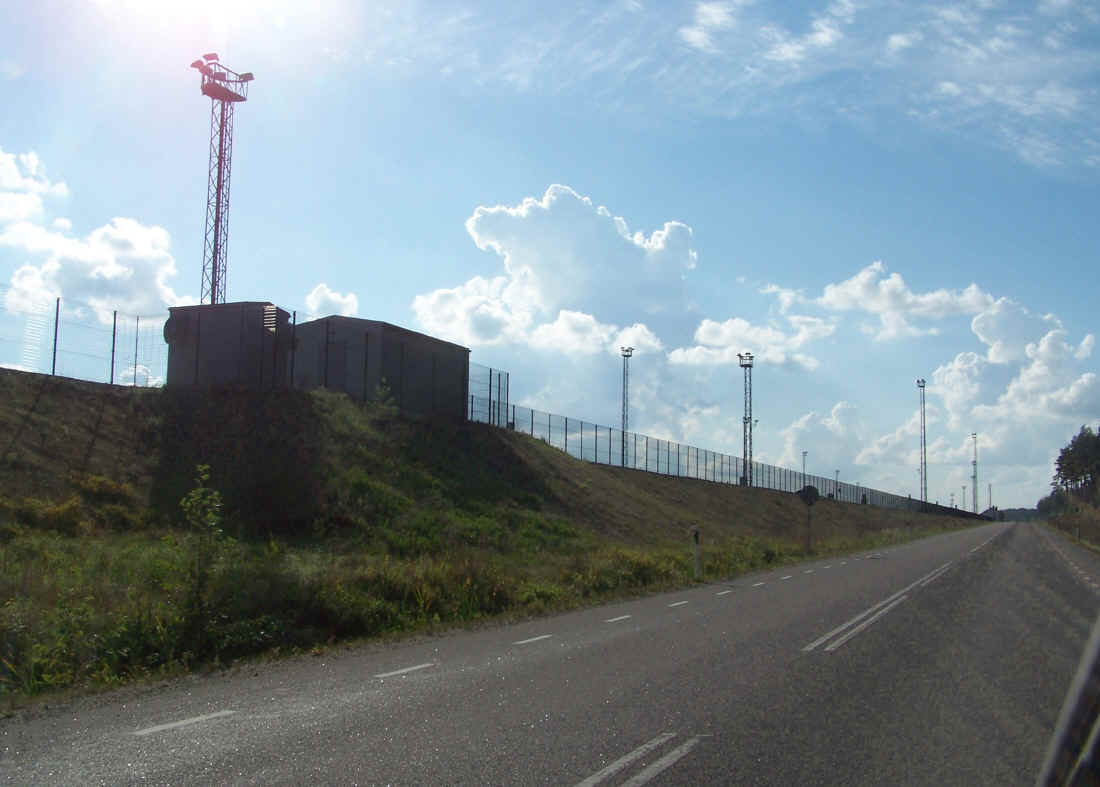Expand your screen to full size, so the pictures won't get cut off.
![]()
Galen Berry
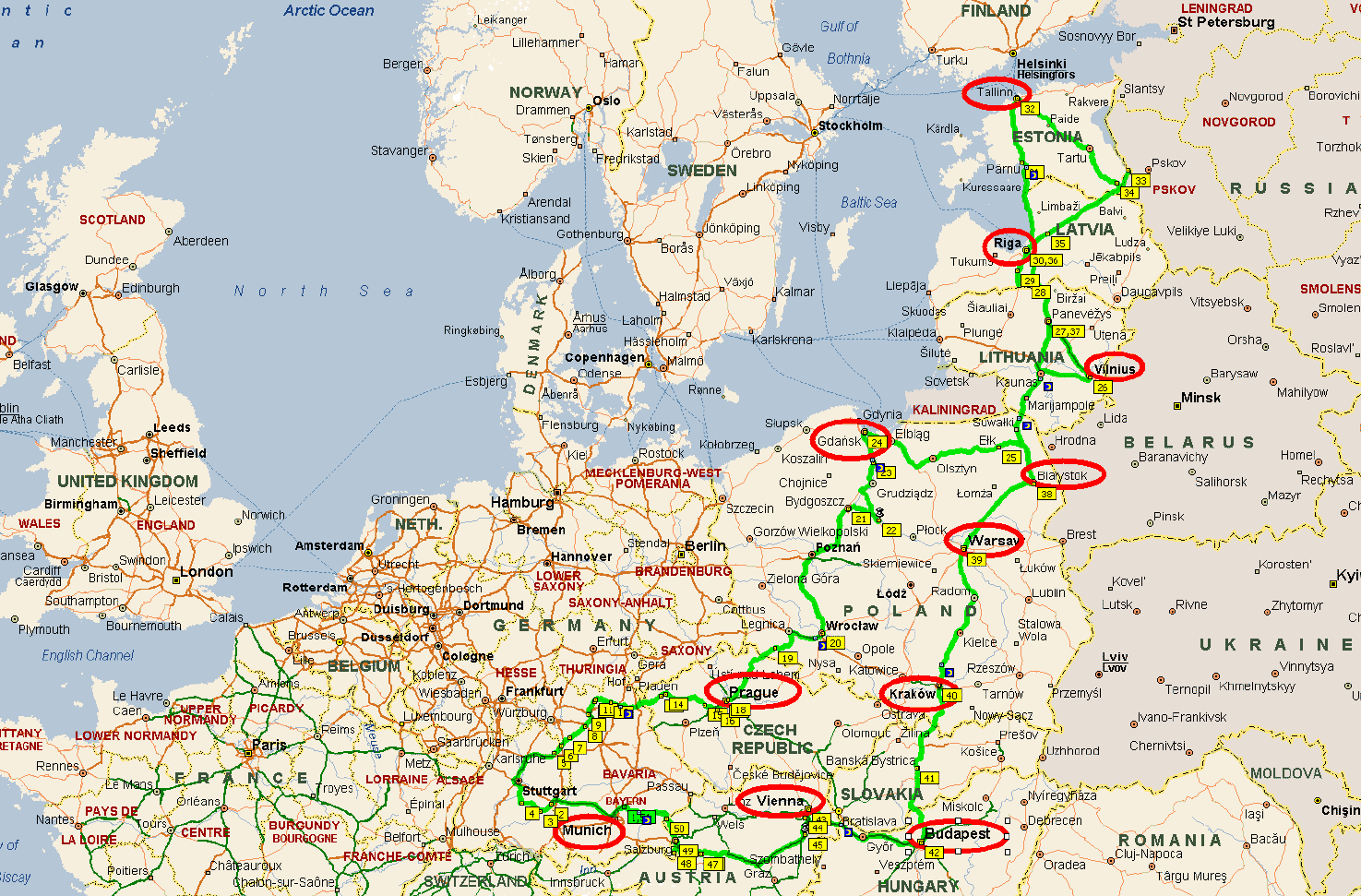
Well okay, the route shown
above is not quite 6000 miles, but that's the only part of the trip where I had
a camera with me! (And not a very good one.)
I also made a big swing through France, Italy, and Switzerland. But the
main purpose of the trip was to see Eastern Europe, all the way up to Estonia.
This trip started in Munich, but the first main stop was at number 2 on the map
above, in the German town of Ulm.
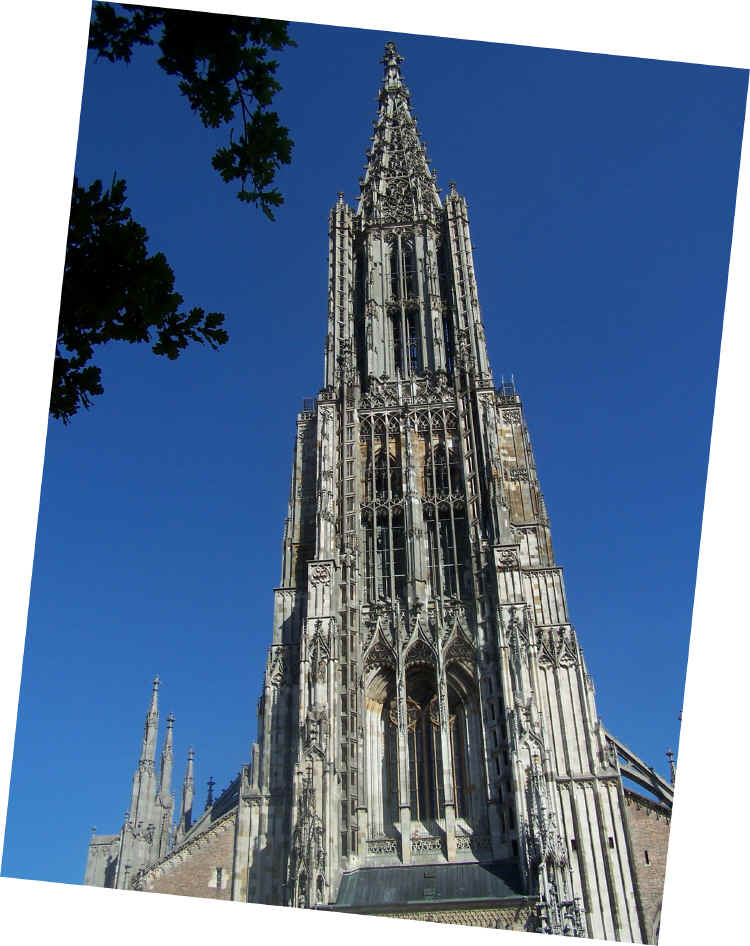
The great Gothic cathedral of Ulm, Germany. It is the tallest church in
the world. Construction was started in 1377.
It was built totally of stone and mortar -- they didn't have steel and concrete
way back then.
I couldn't back up far enough to get it all in one picture!
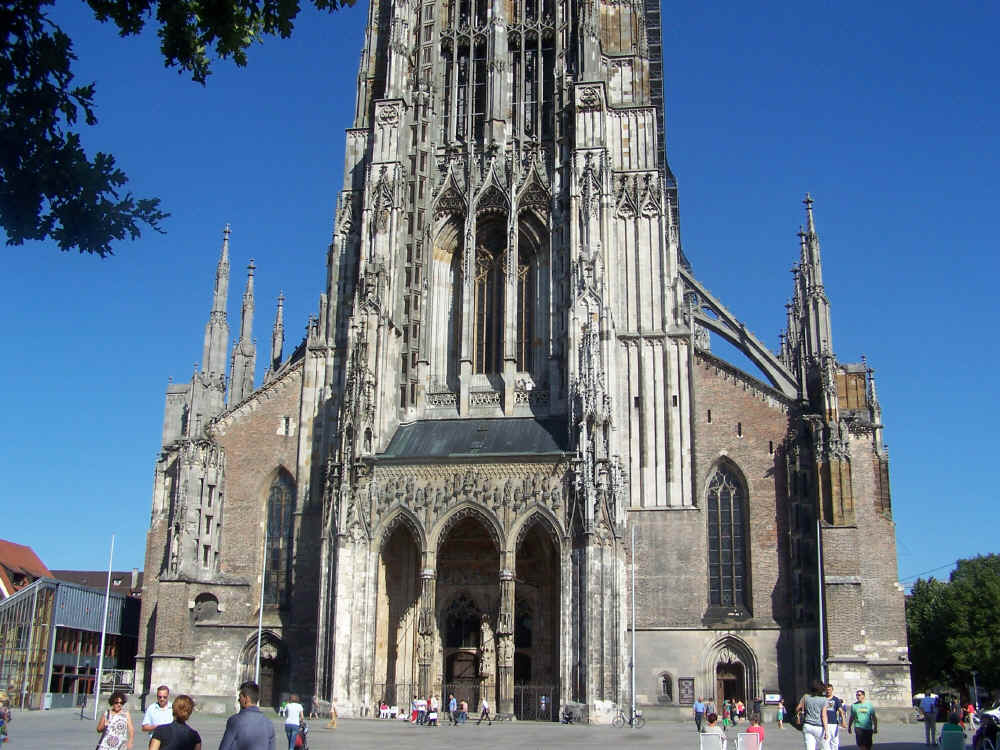
The Basilica of
Vierzehnheiligen, north of Bamberg, Germany, is a huge contrast in style to the
Gothic.
It was built in the Baroque period, when the interiors often received much more
detail than the outside of the buildings.
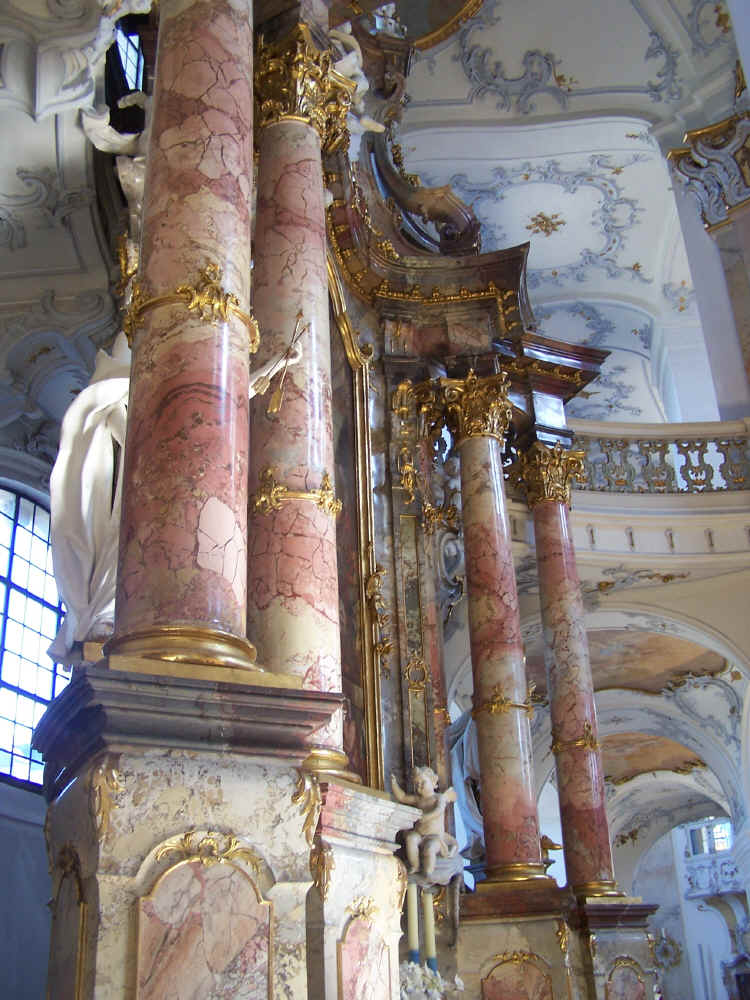
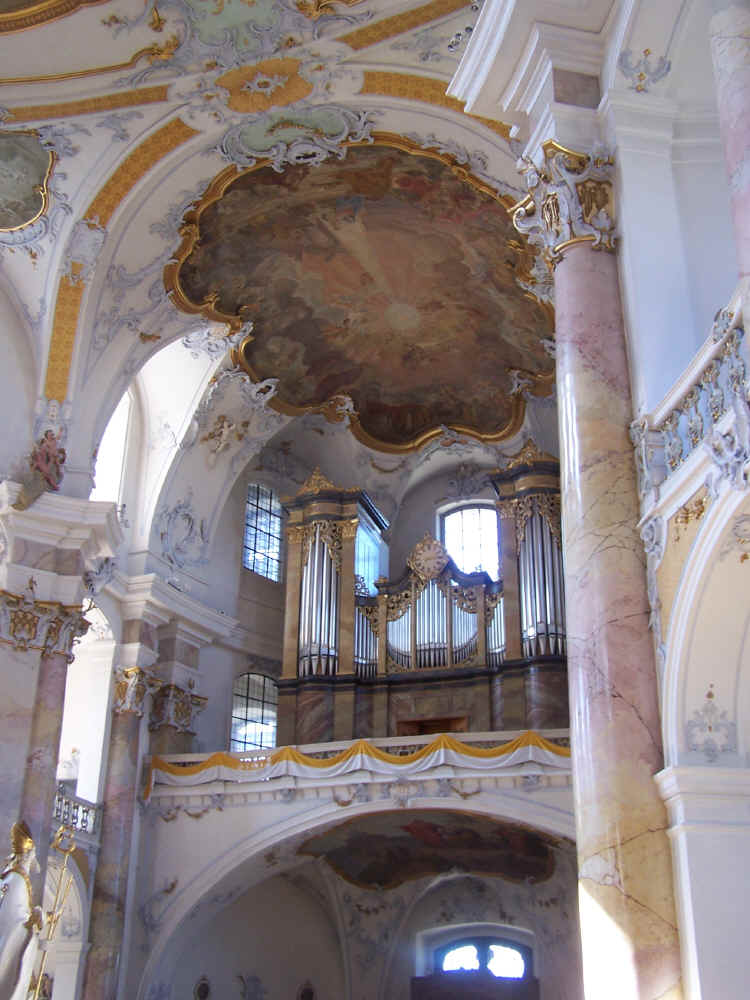
The marbling on the columns
was so excellent, I had to ask a monk if it was real stone or fake. It is
fake!
The art of scagliola, or false marble, is a highly-regarded, difficult art form;
it is as prized as real marble when done well, and this was the best I have ever
seen.
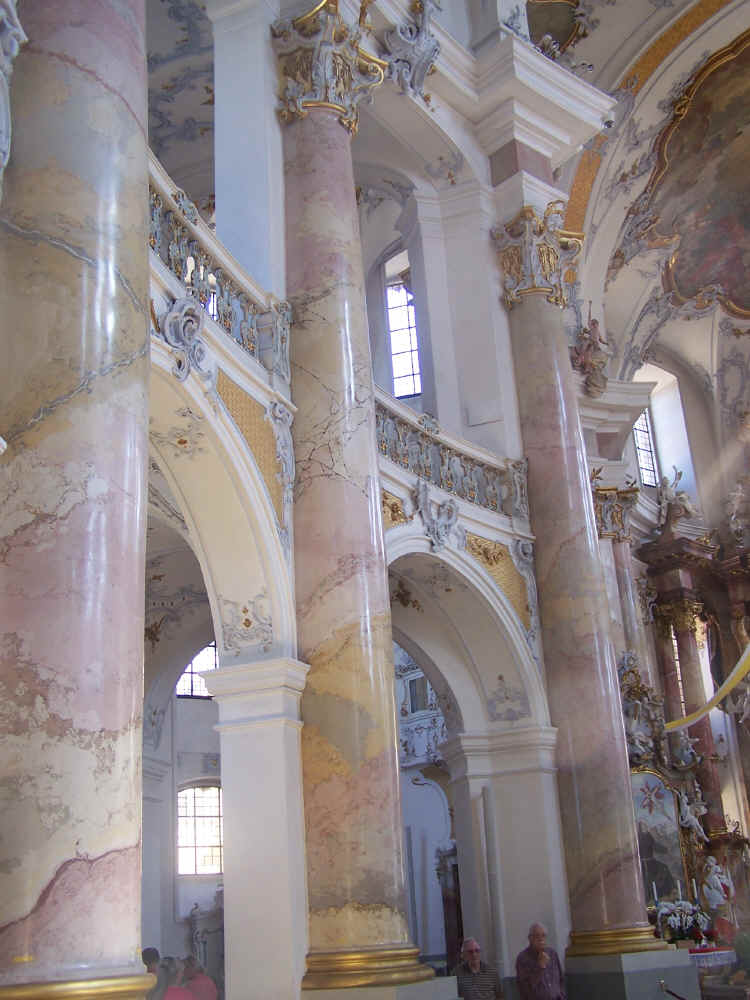
An entrance to the little
medieval city of Rothenburg, Germany -- one of the few remaining walled cities
in Europe.
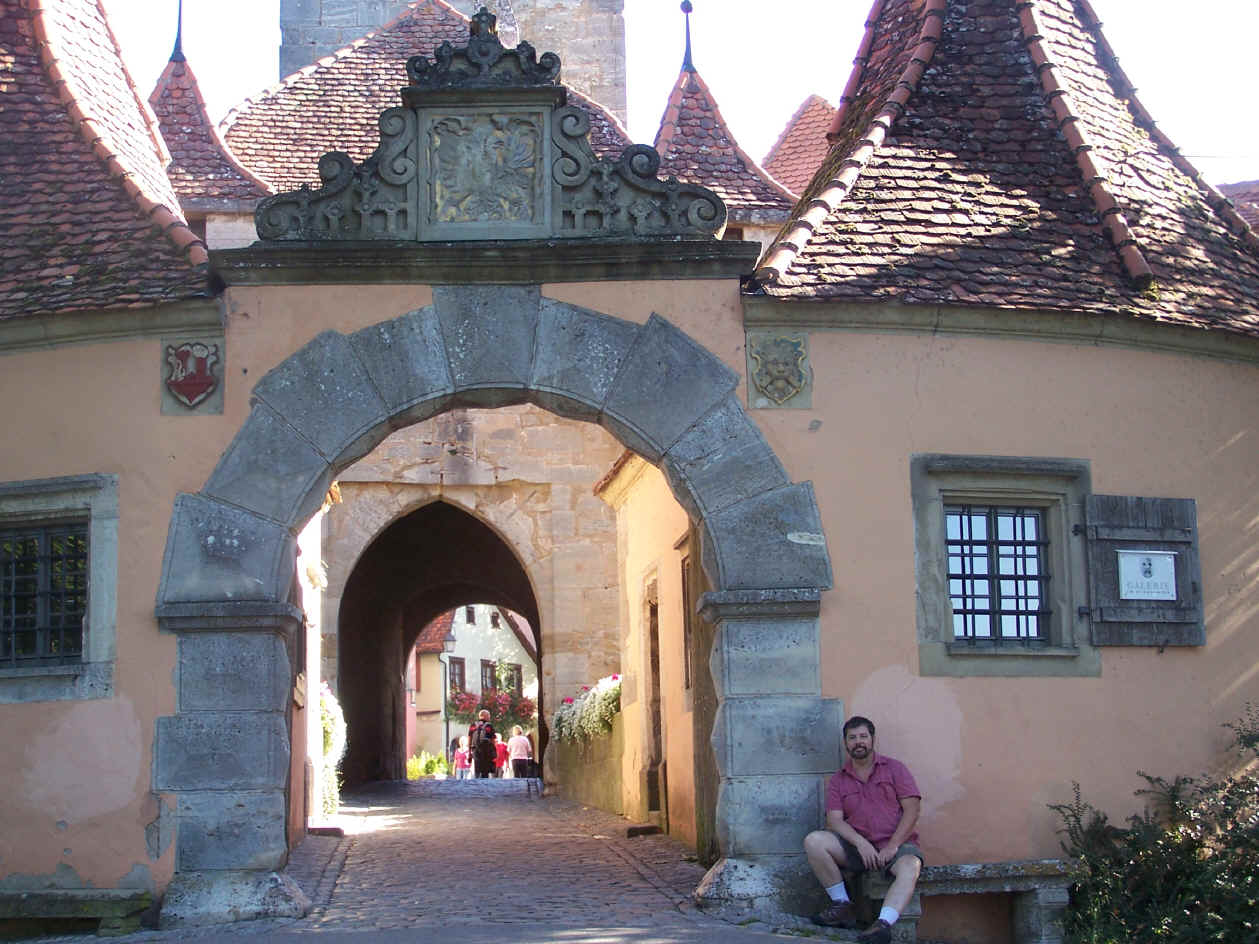
They poured boiling oil onto
invaders through the holes of the face!
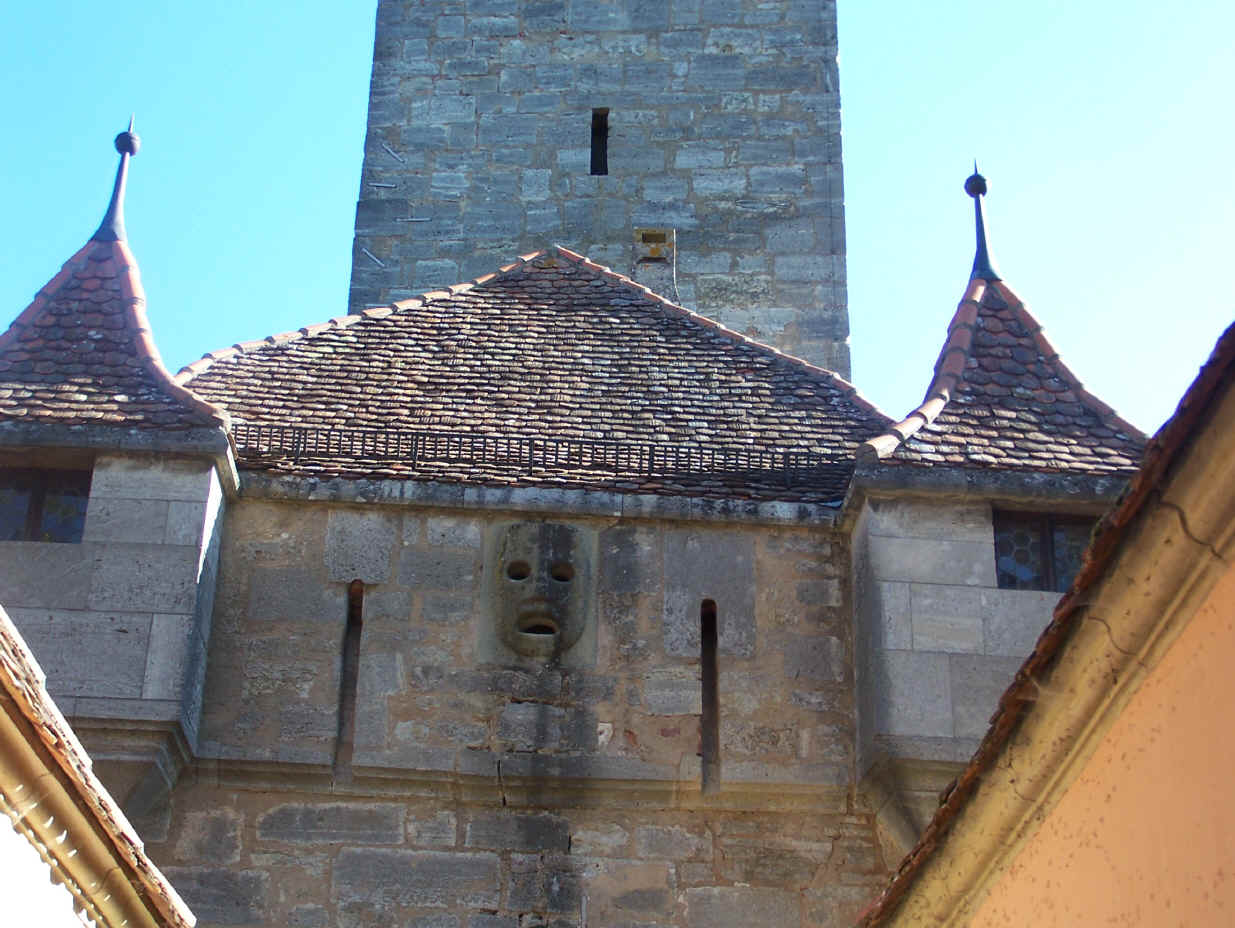
More scenes from Rothenburg:
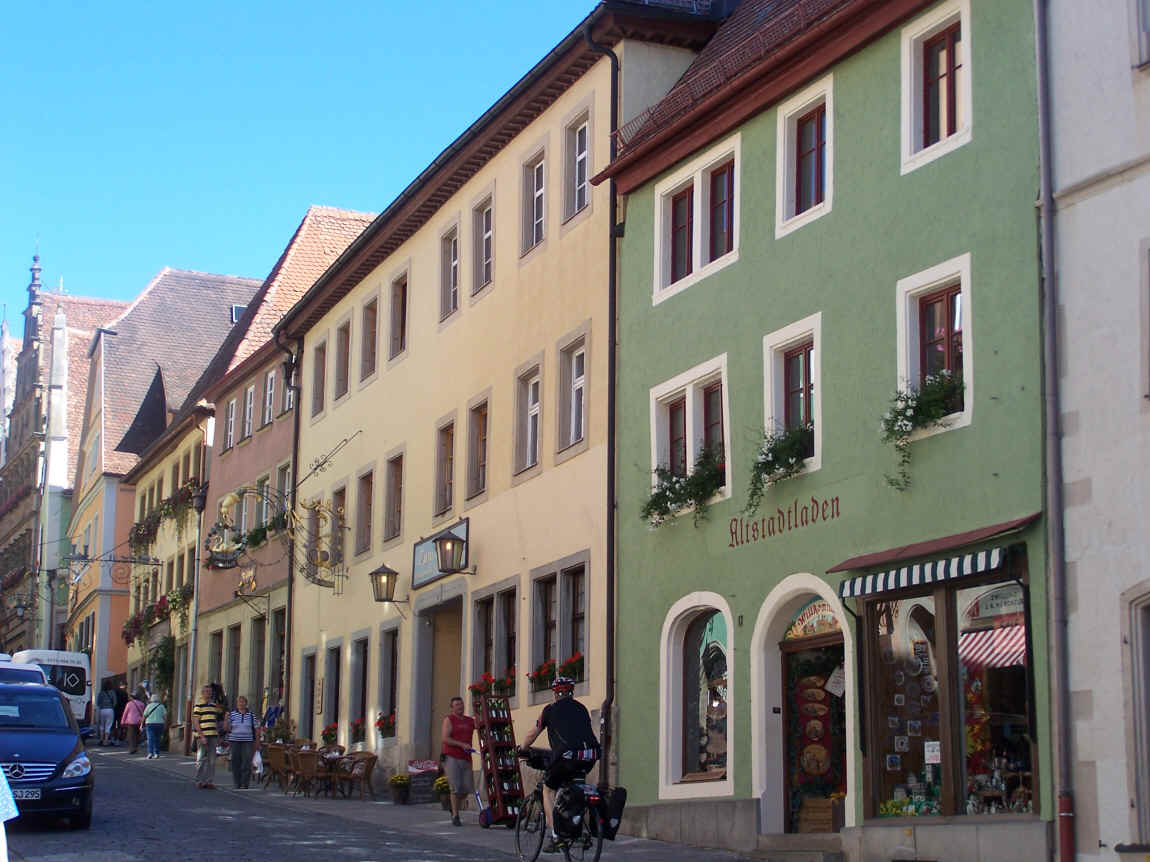
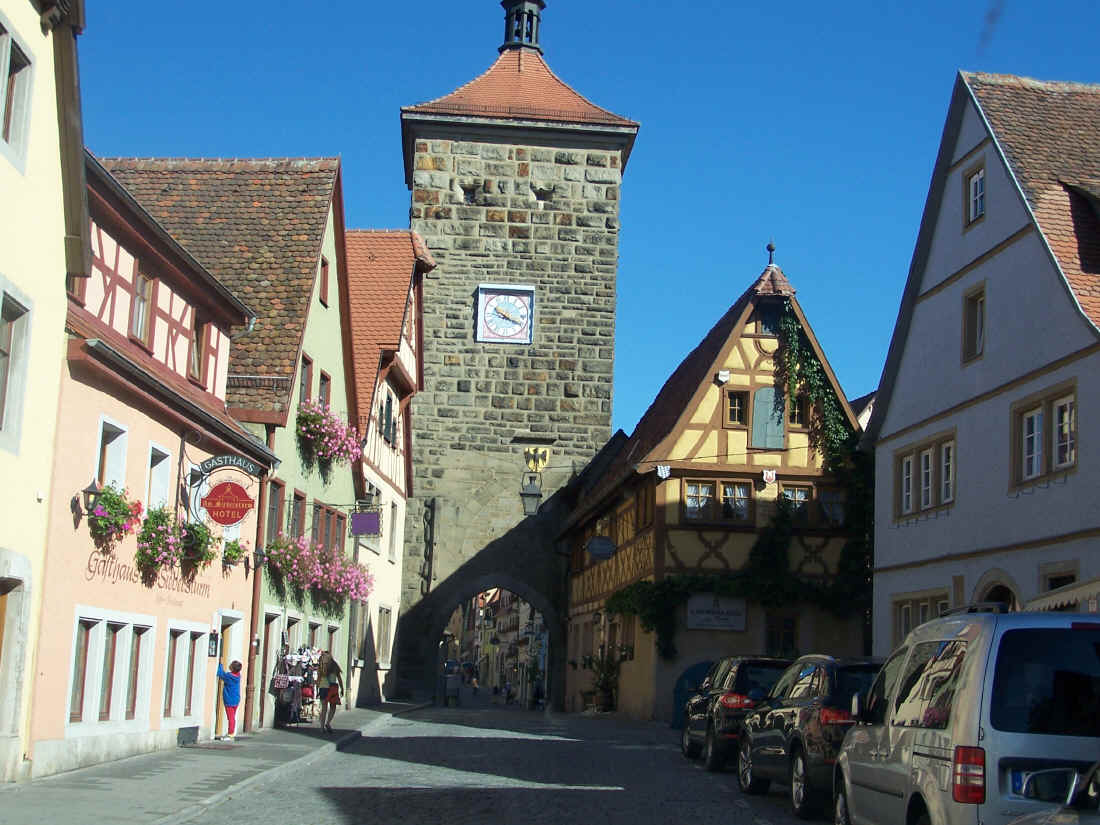
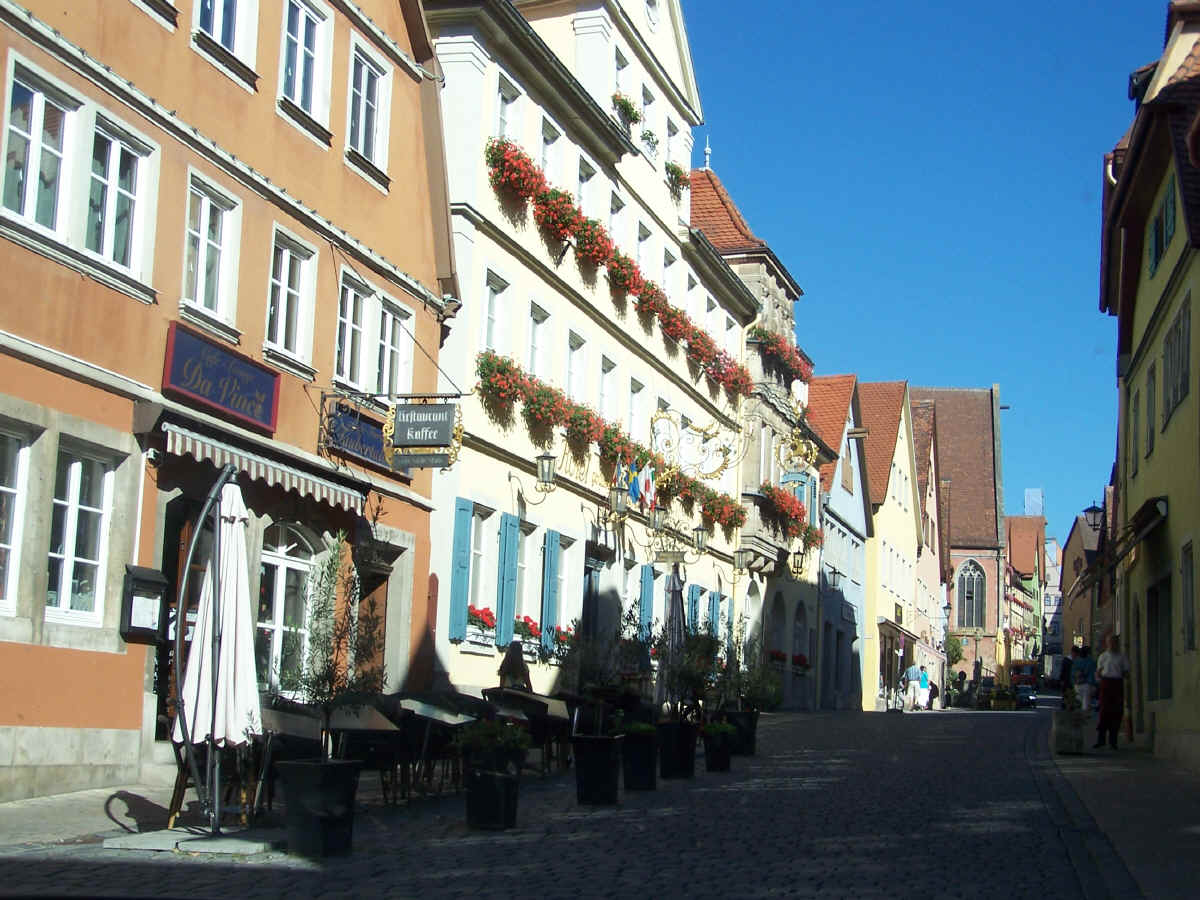
Into the Czech Republic --
the tiny town of Loket:

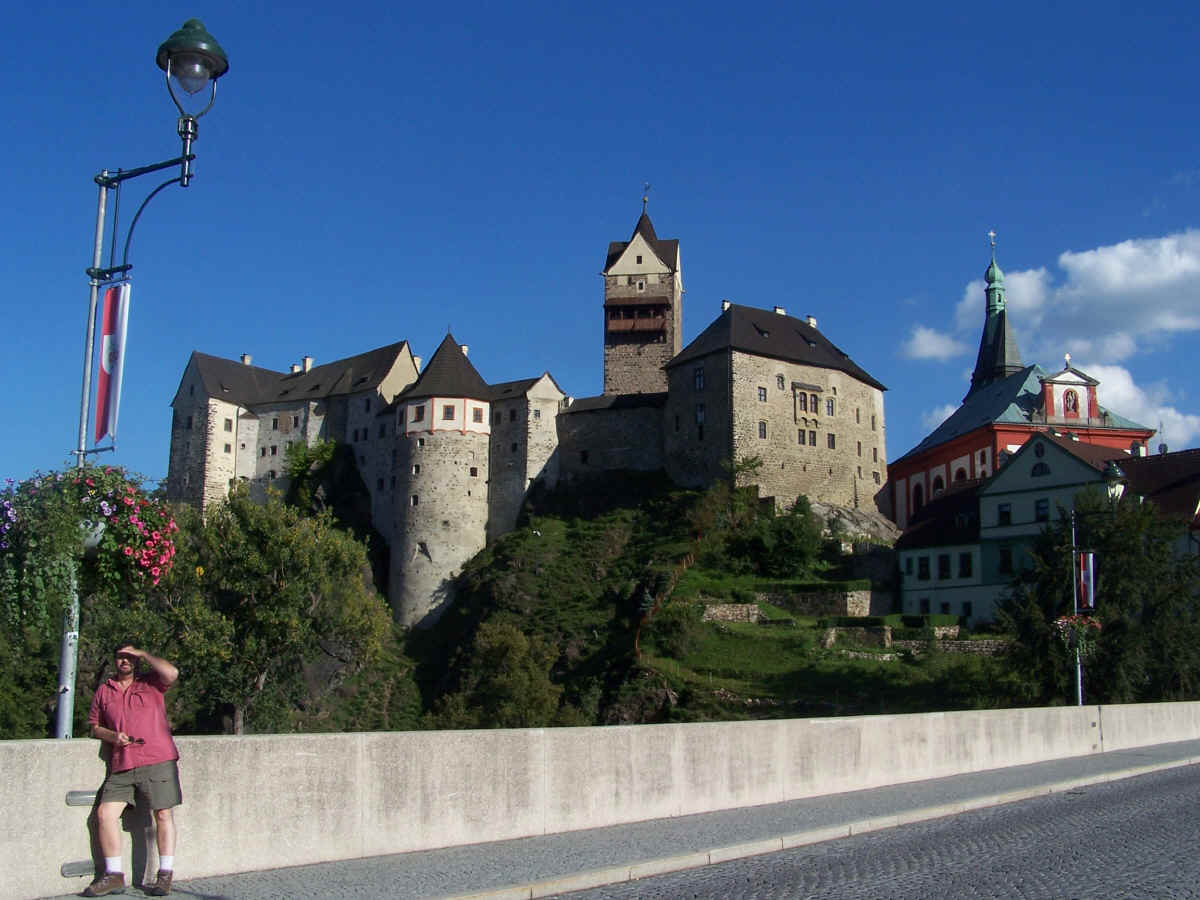
A street behind the castle
in Loket:
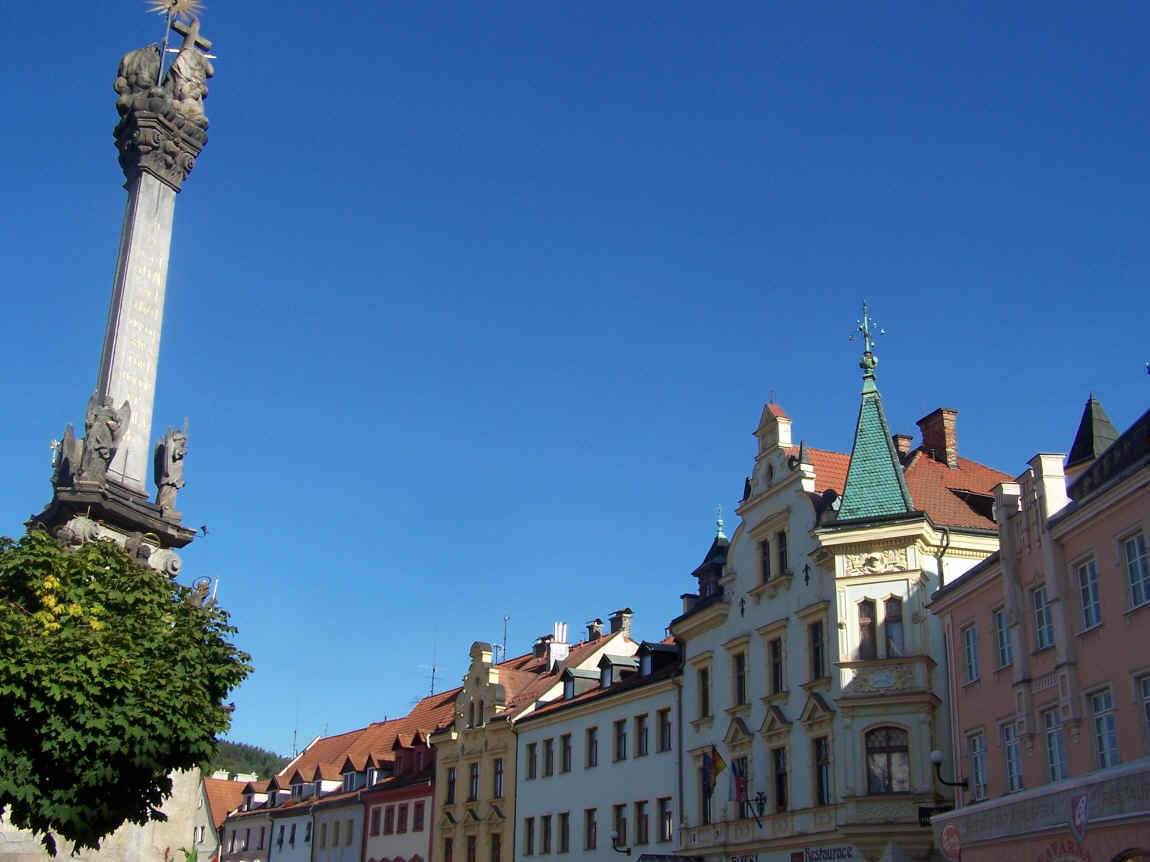
"Loket" means
"elbow" in Czech -- because of the way the river makes a sharp curve
around the town:
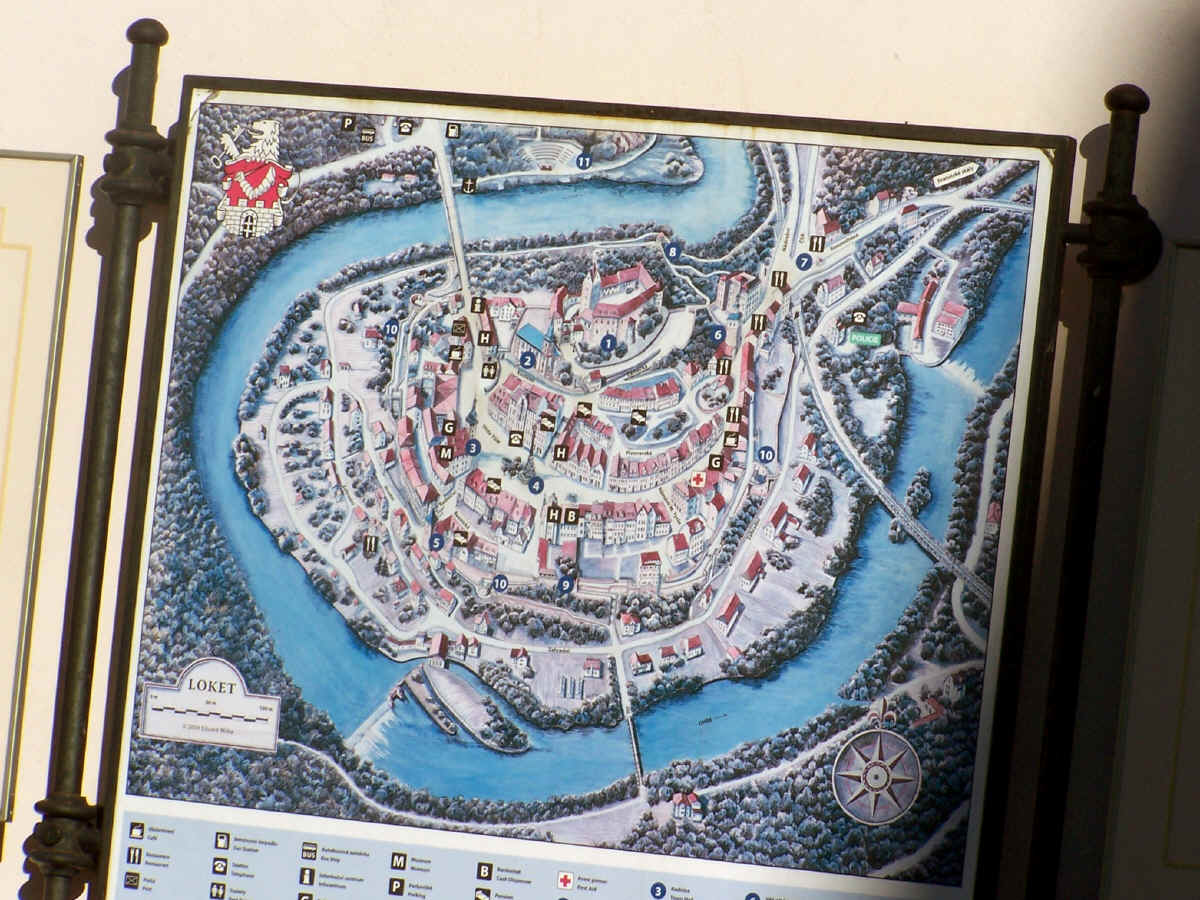
One of my favorite cities in
the world, Karlovy Vary!
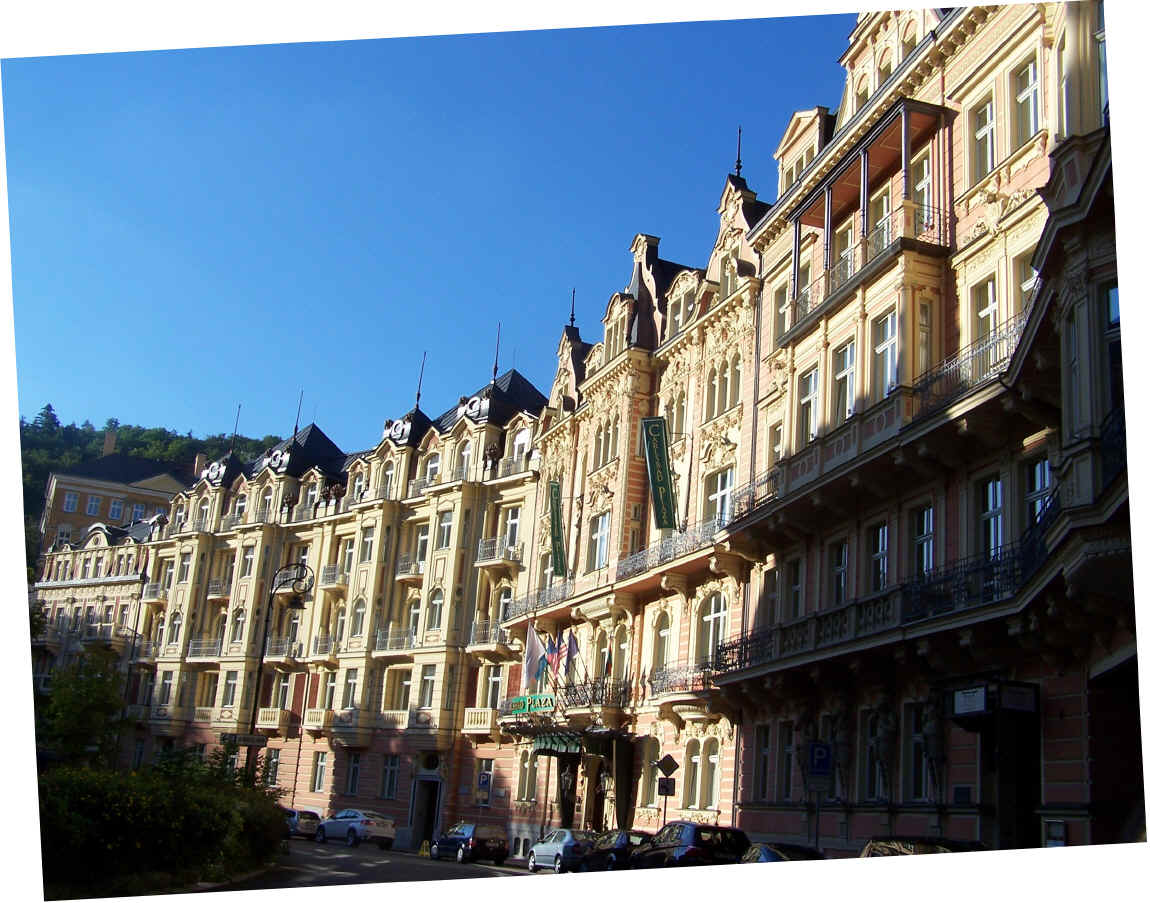
Karlovy Vary was a very grand resort town in centuries past for the royalty and
aristocrats of Europe, with many luxury hotels built around their hot springs.
This is the Grand Hotel Pupp (pronounced "poop" in Czech).
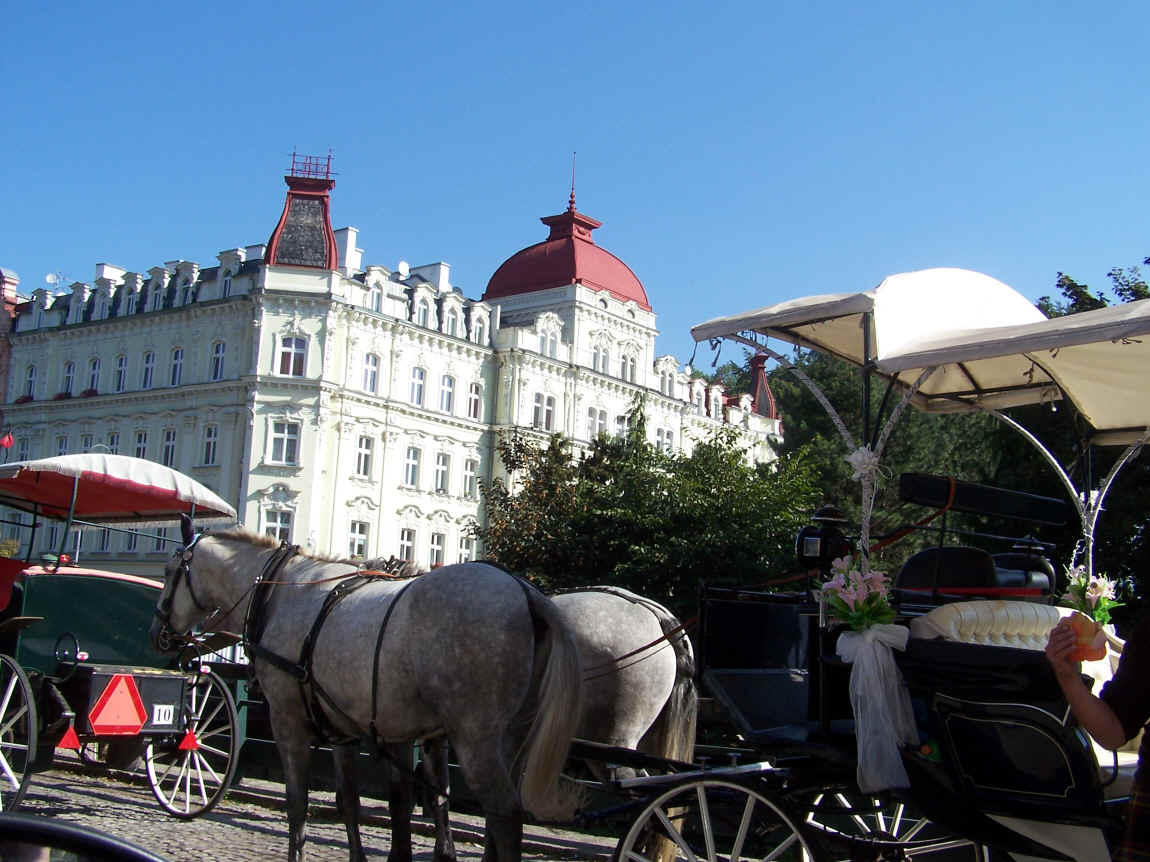
Křivoklát Castle, in the Czech Republic.
This is a beautiful place,
almost unknown to tourists, in an out-of-the-way part of the country -- you
almost feel like you have gone back 500 years in time.
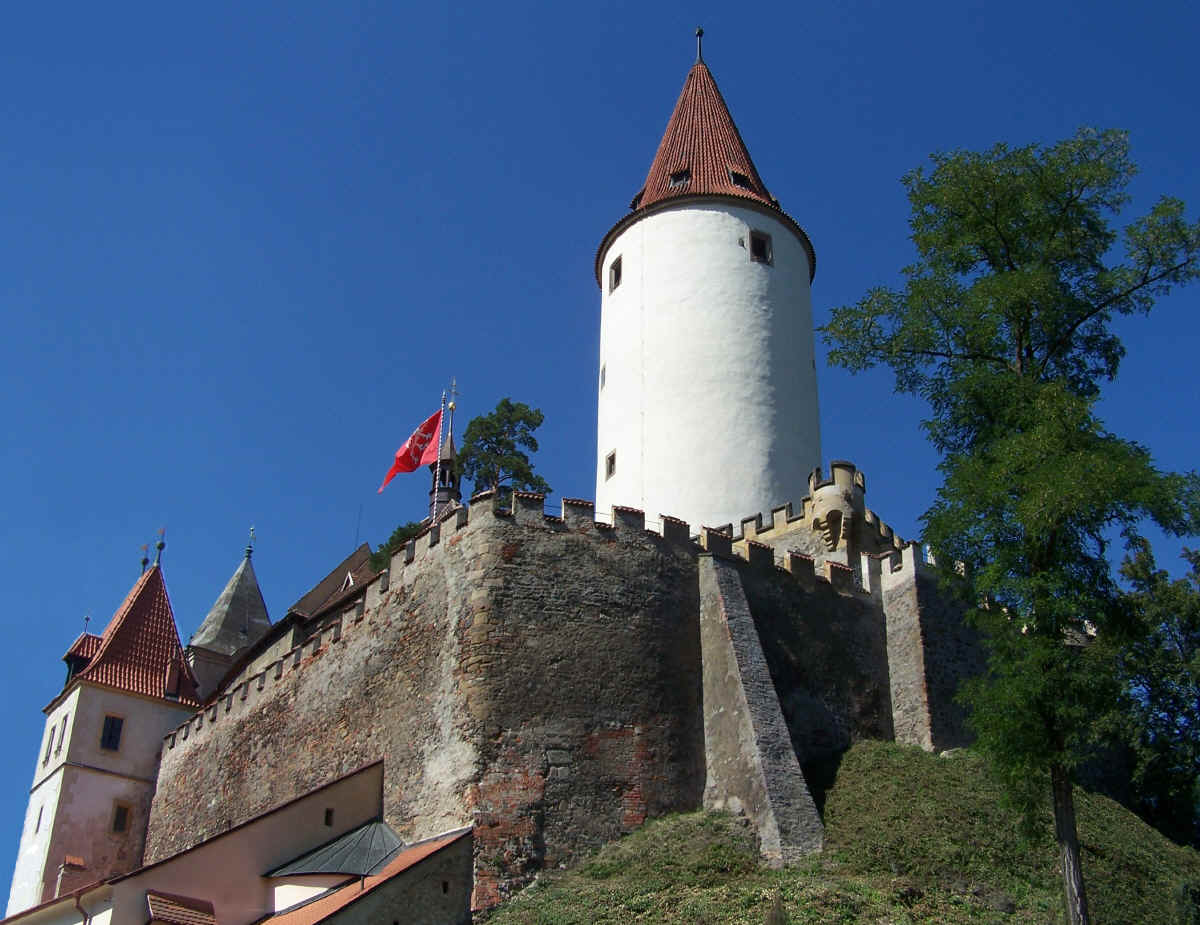
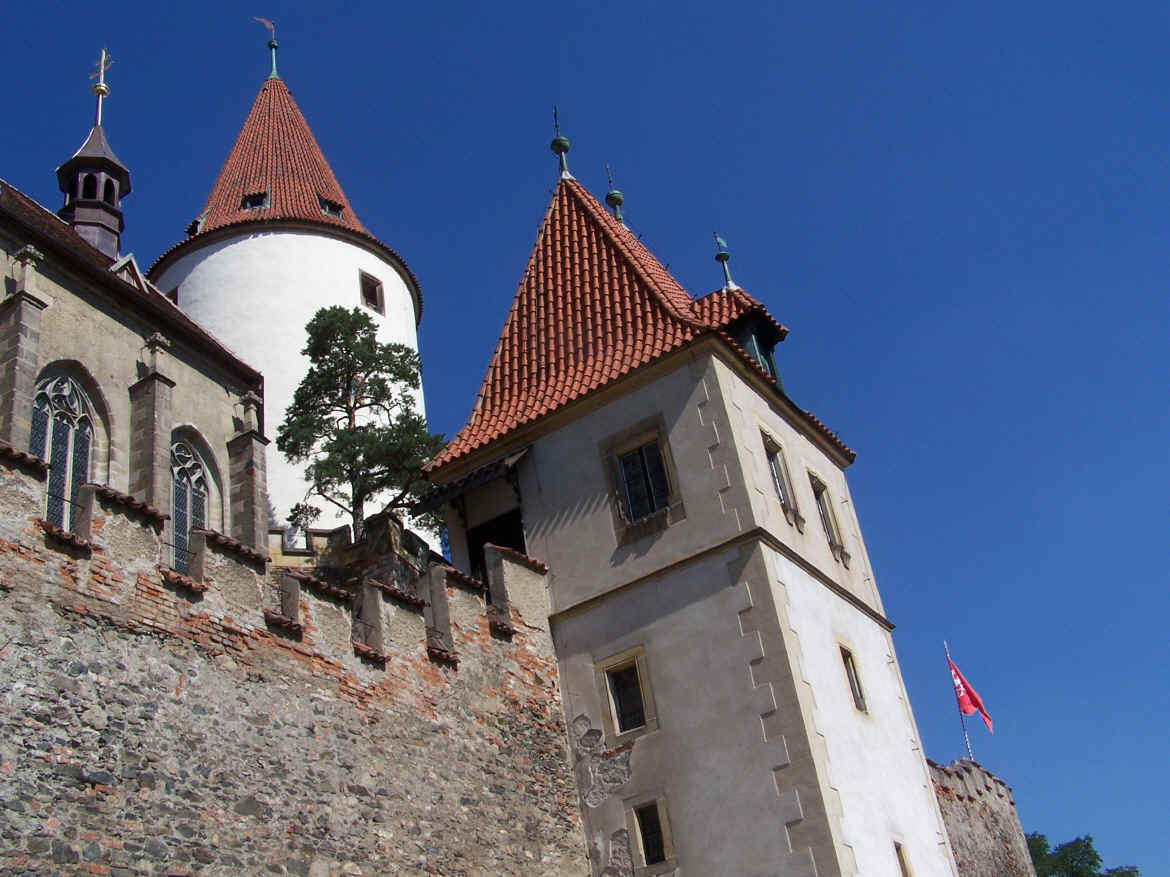
At the Křivoklát castle
gates:
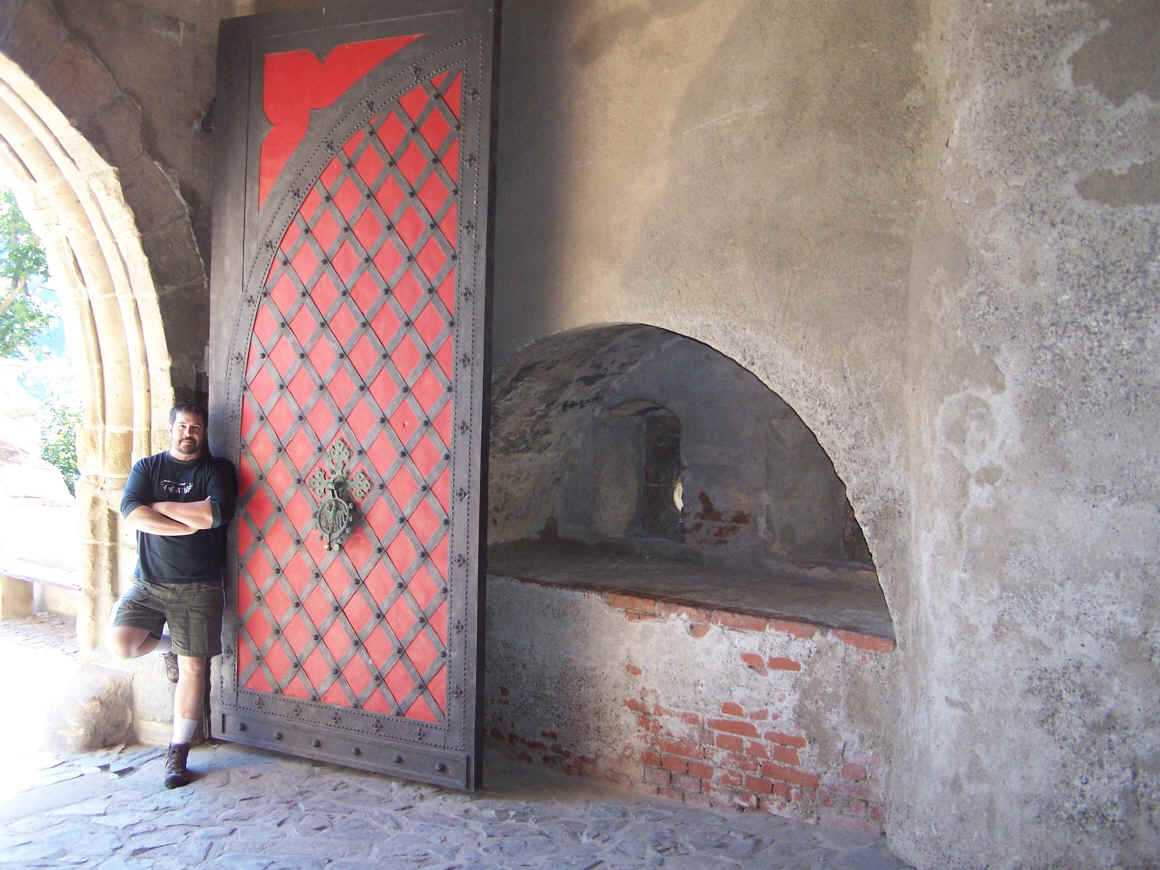
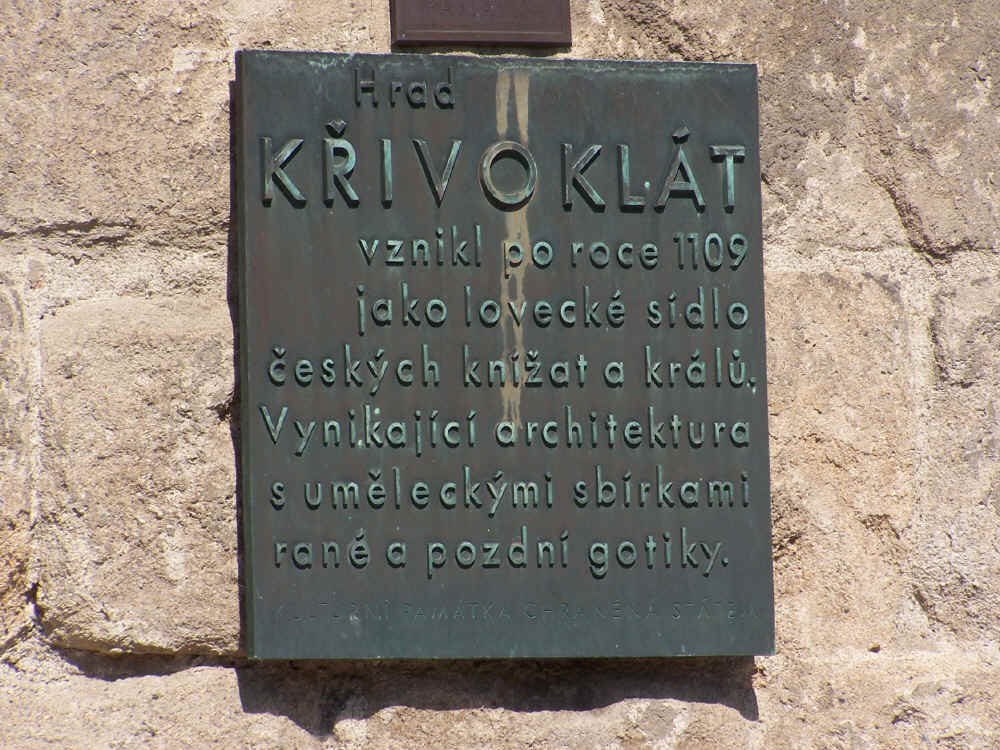
In Prague, Czech Republic --
the black church of Vysehrad, high above the Moldau River:
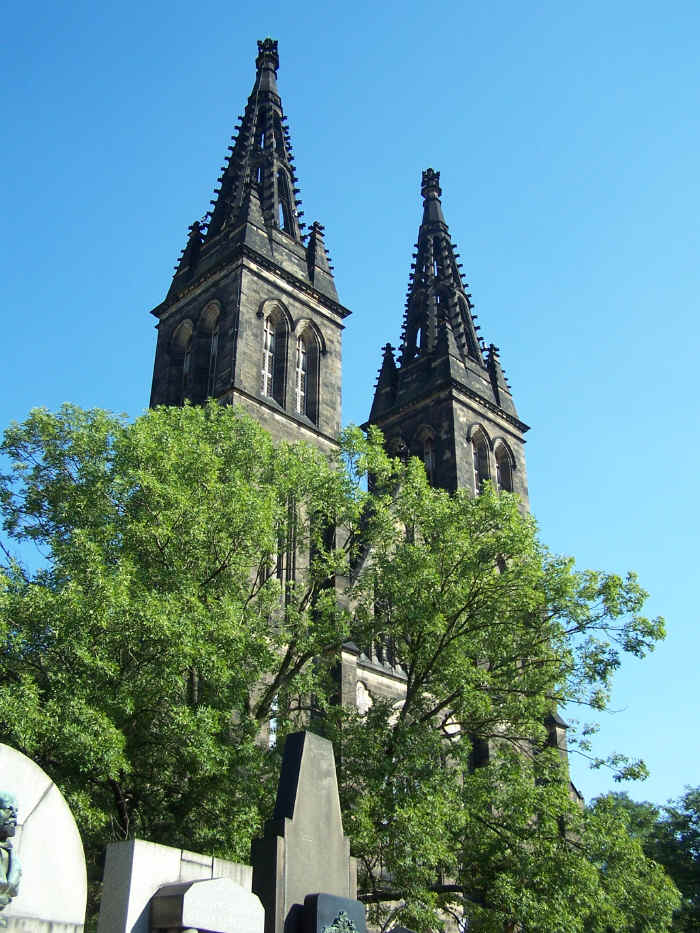
The grave of Bedřich
Smetana, one of my most favorite composers:
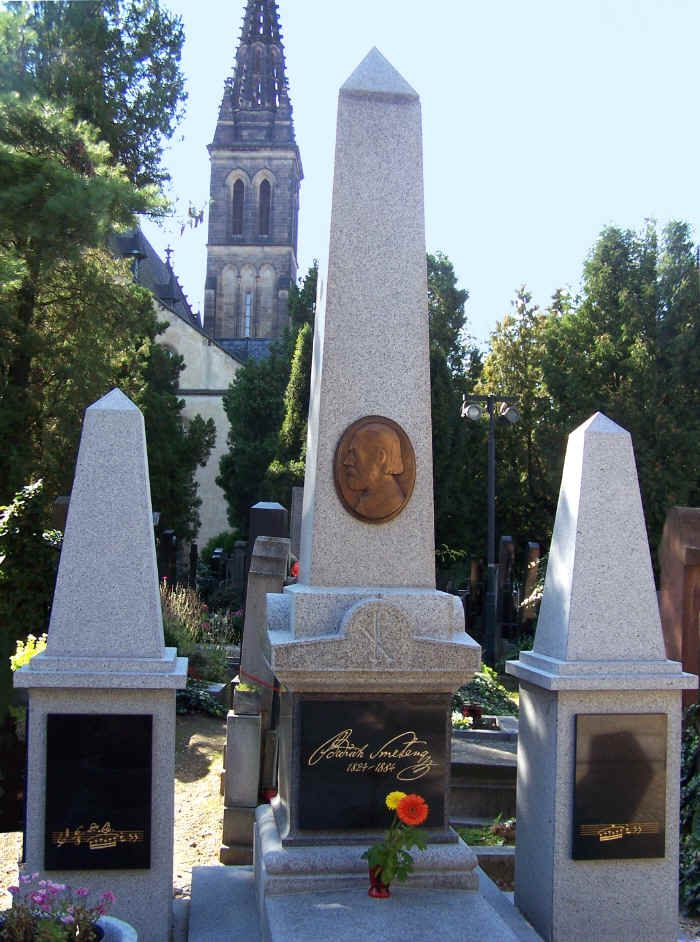
On one side are carved the
names of his most famous orchestral pieces.
On the other is a list of all of his operas.
On the front are the first notes of his most famous piece, Vltava (or The Moldau).
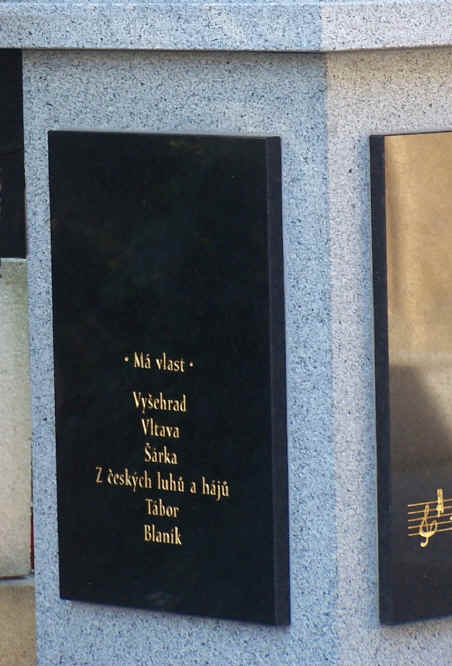
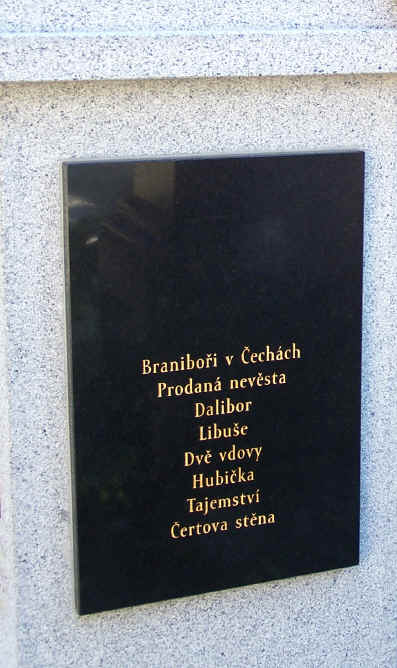
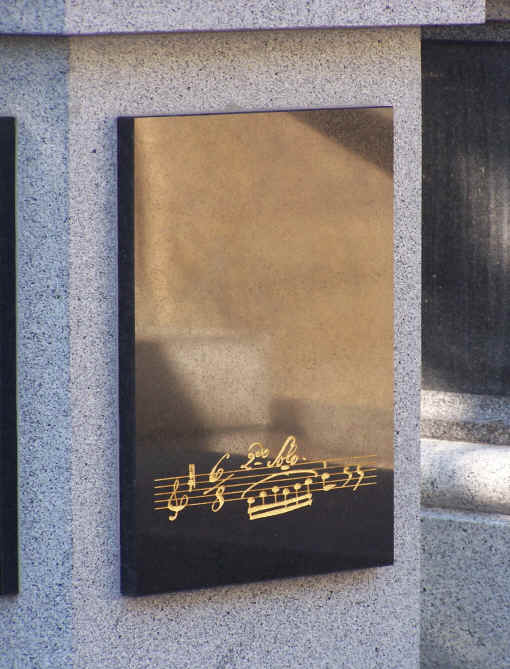
The grave of Antonín Dvořák
in Vysehrad, the other most famous Czech composer:
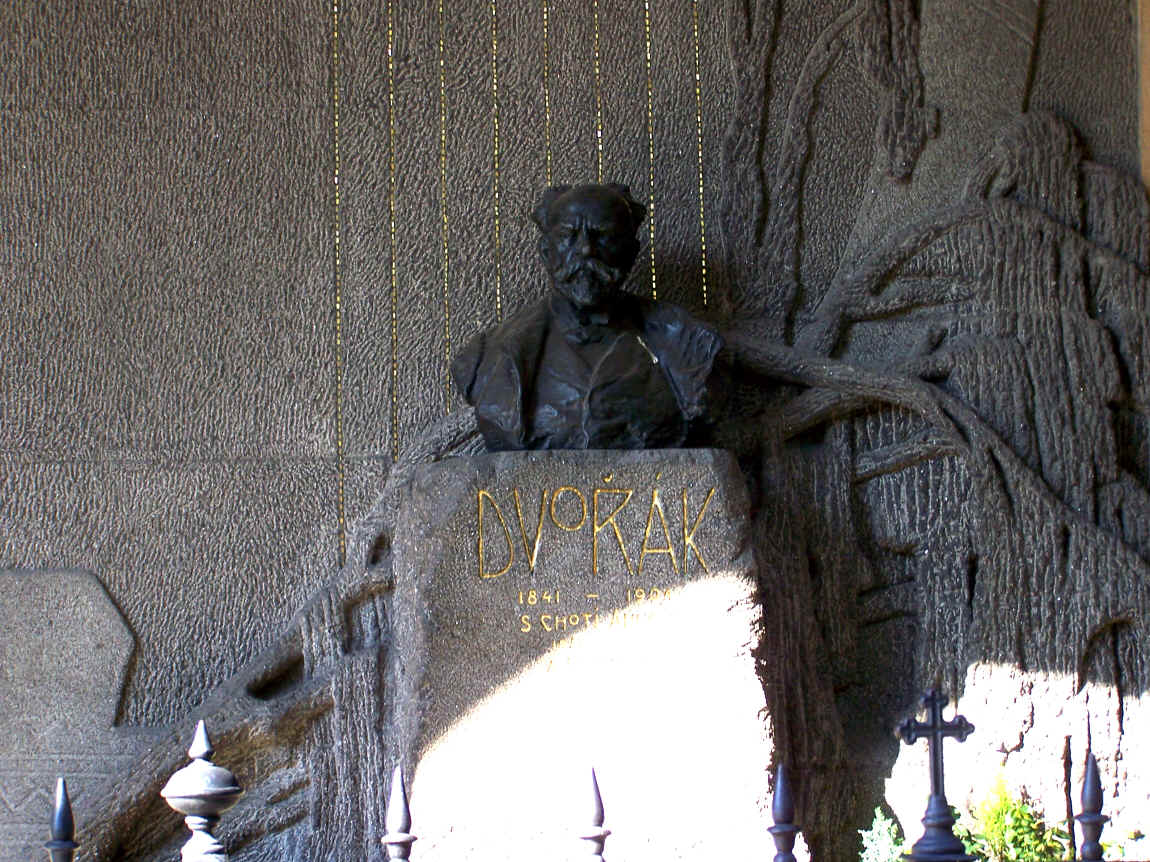
On into Poland!
Ciechocinek is a very pretty resort town in northern Poland, popular with Poles
but with hardly any foreign tourists.
It is famous for its beautiful parks and great halotherapy towers.
I stayed at the Willa Nowa hotel.
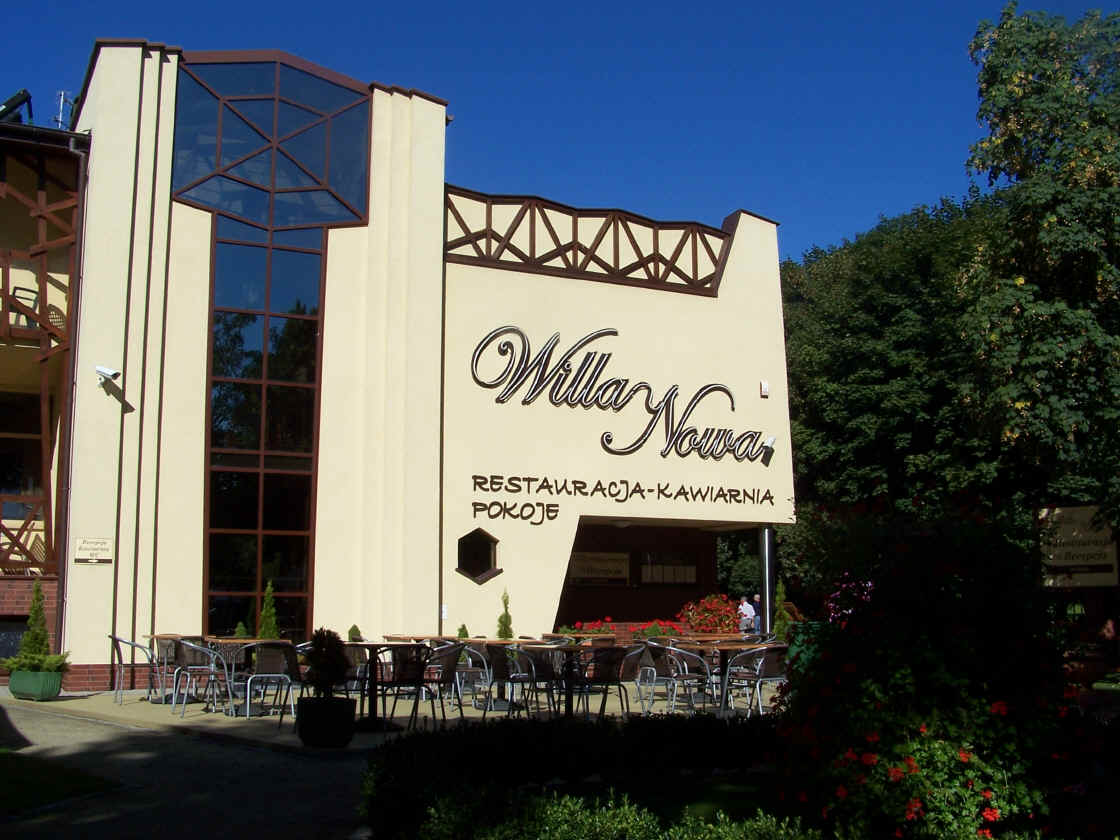
The halotherapy towers are
over 100 years old. They stretch for nearly a mile. Salt water is
pumped to the top, and then trickles down through packed birch branches.
The air all around the towers is infused with the minerals released by the
evaporating water.
As you walk along the paths beside the towers and breathe the air, you are
supposed to be restored and invigorated!
It really was quite a magical place late at night when hardly
anybody else was there.
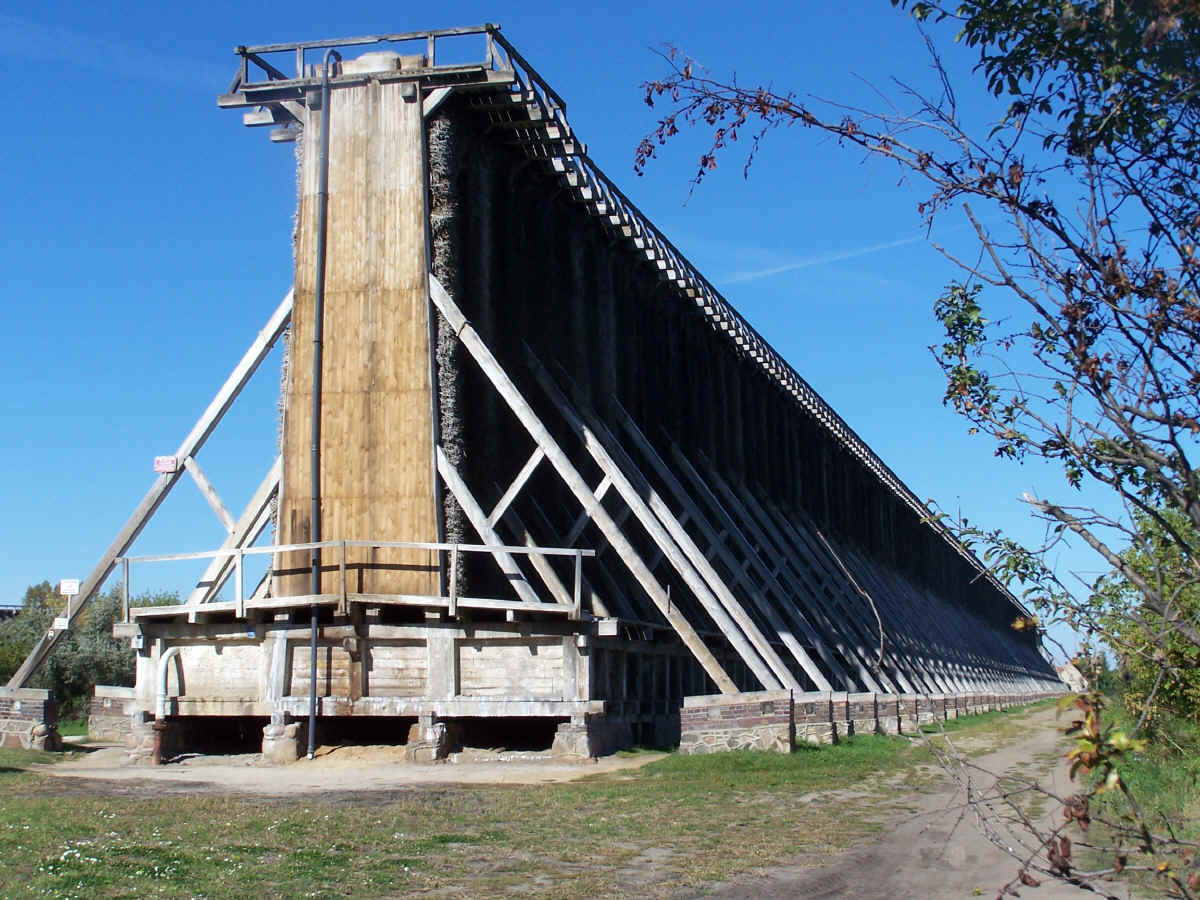
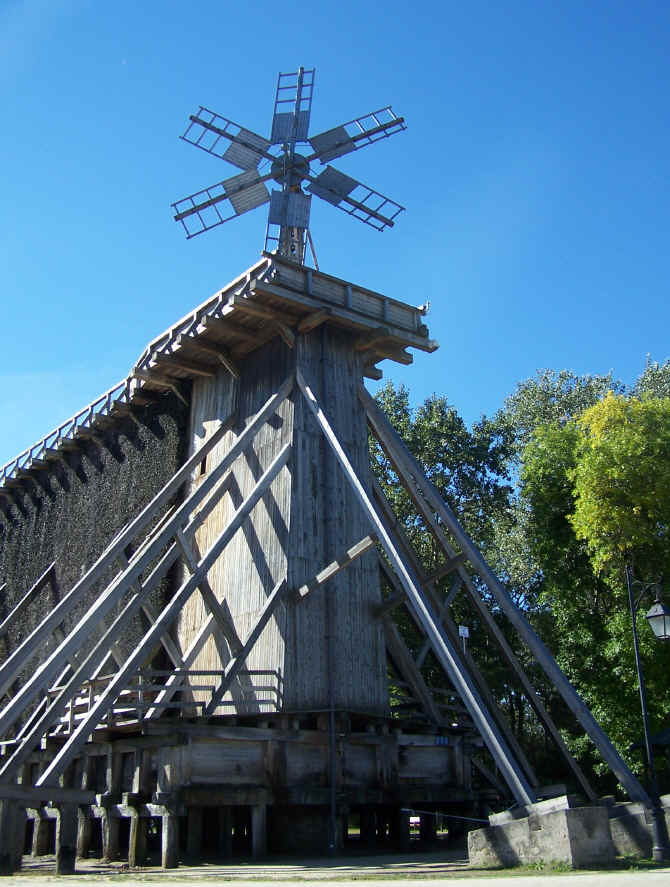
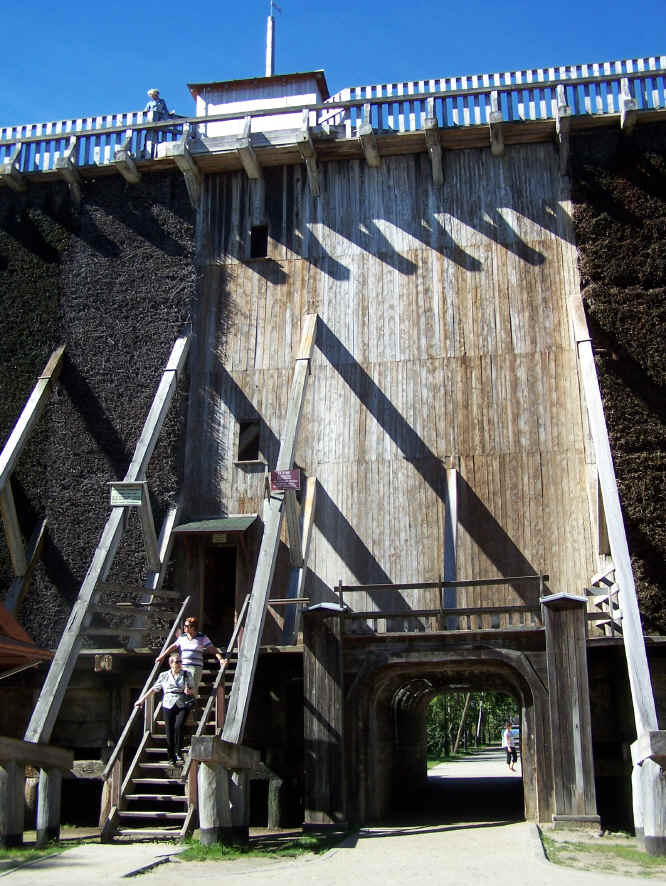
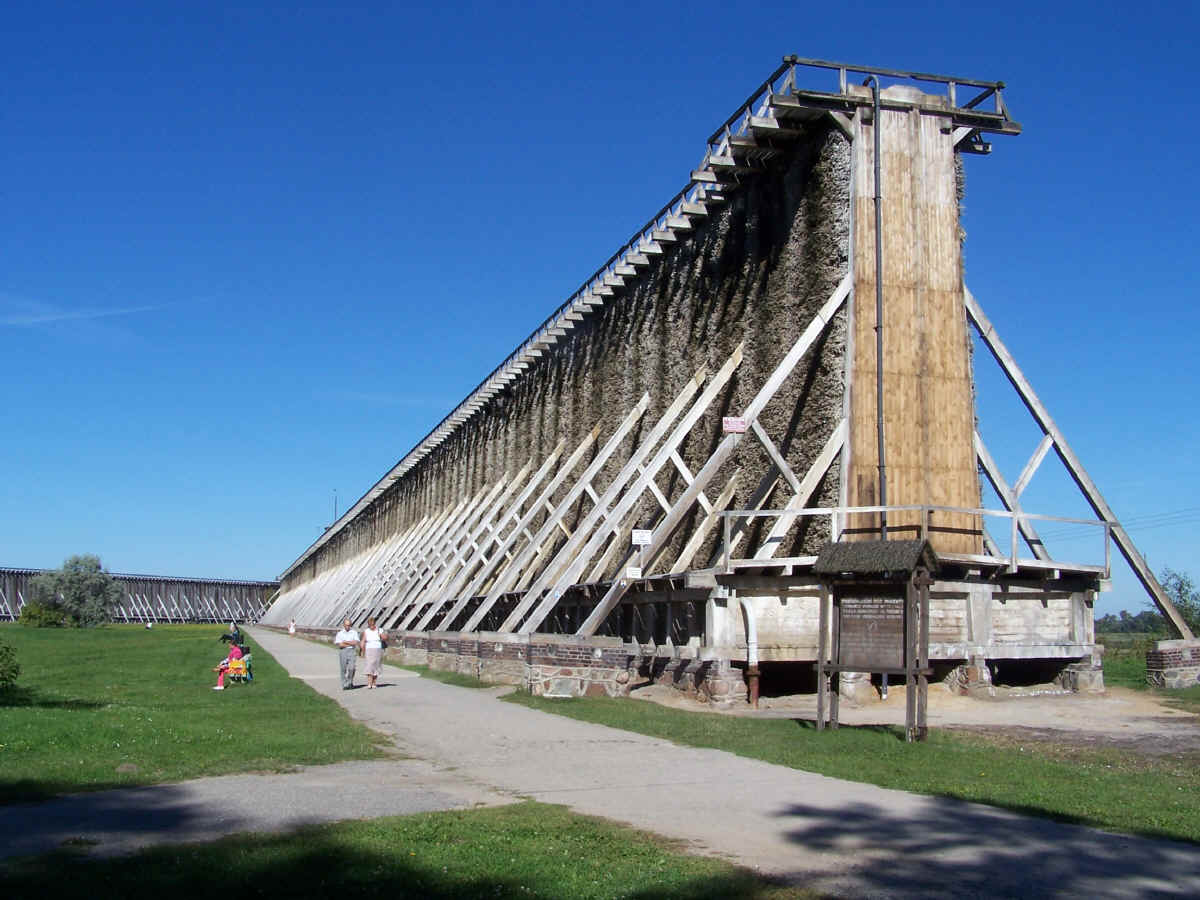
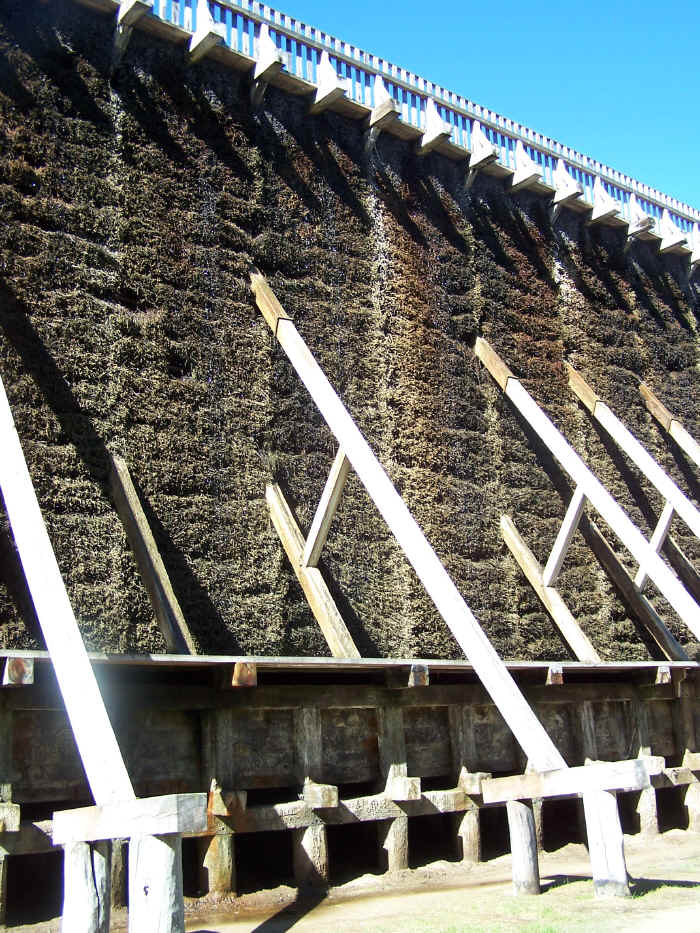
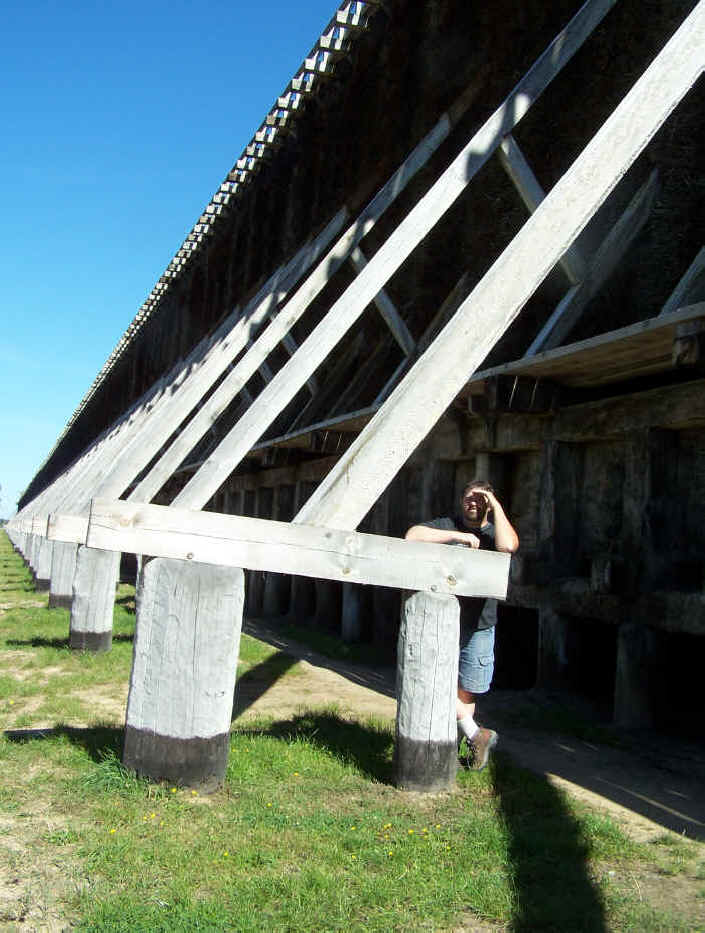
Some have supports made of
brick and stone:
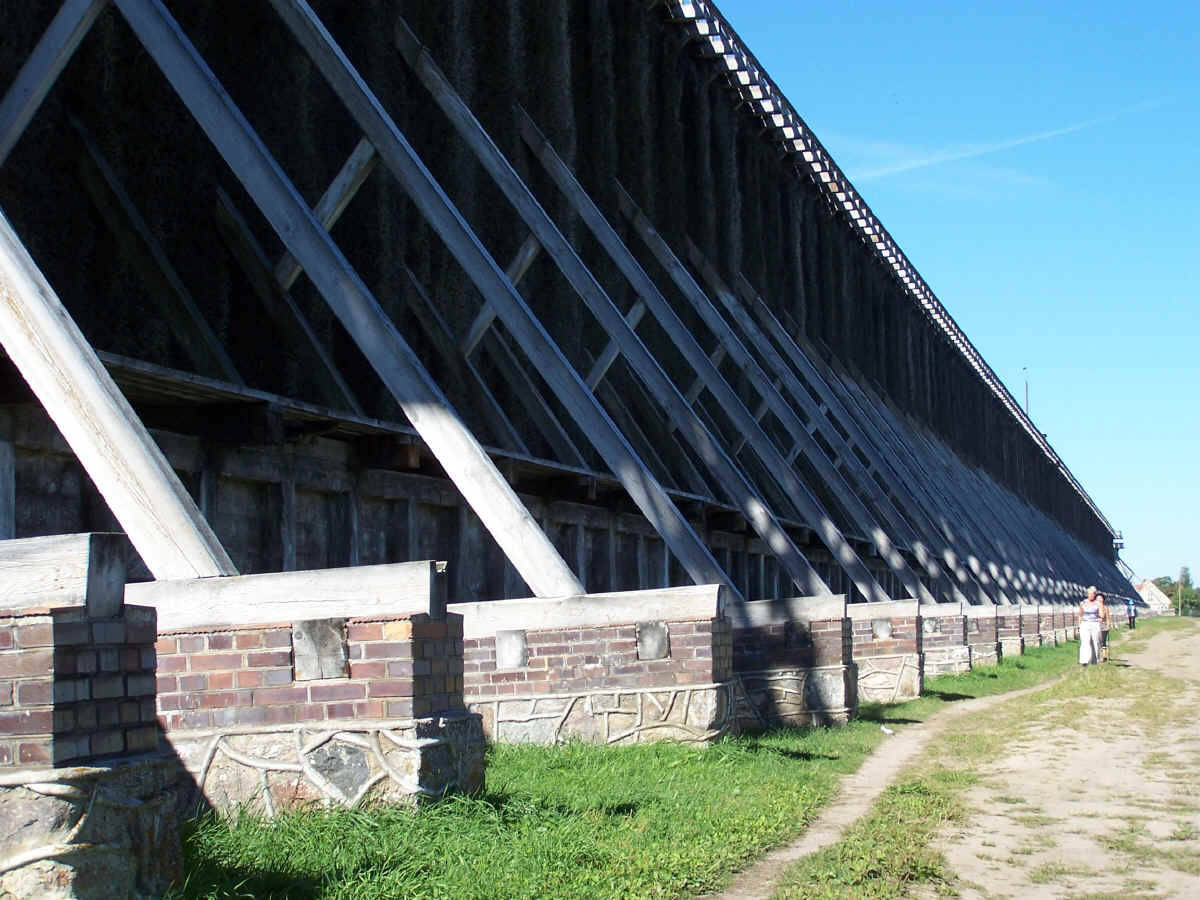
Others just have wooden
supports:
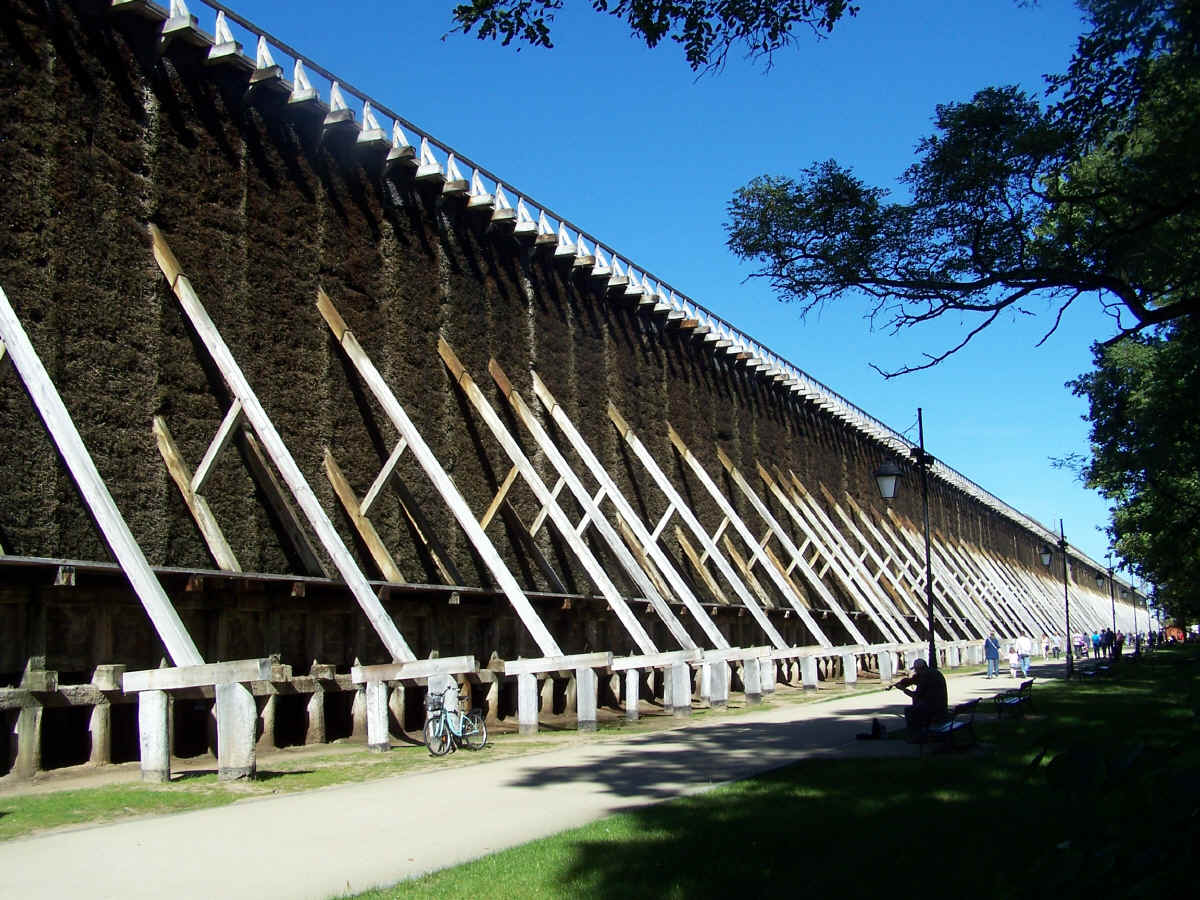
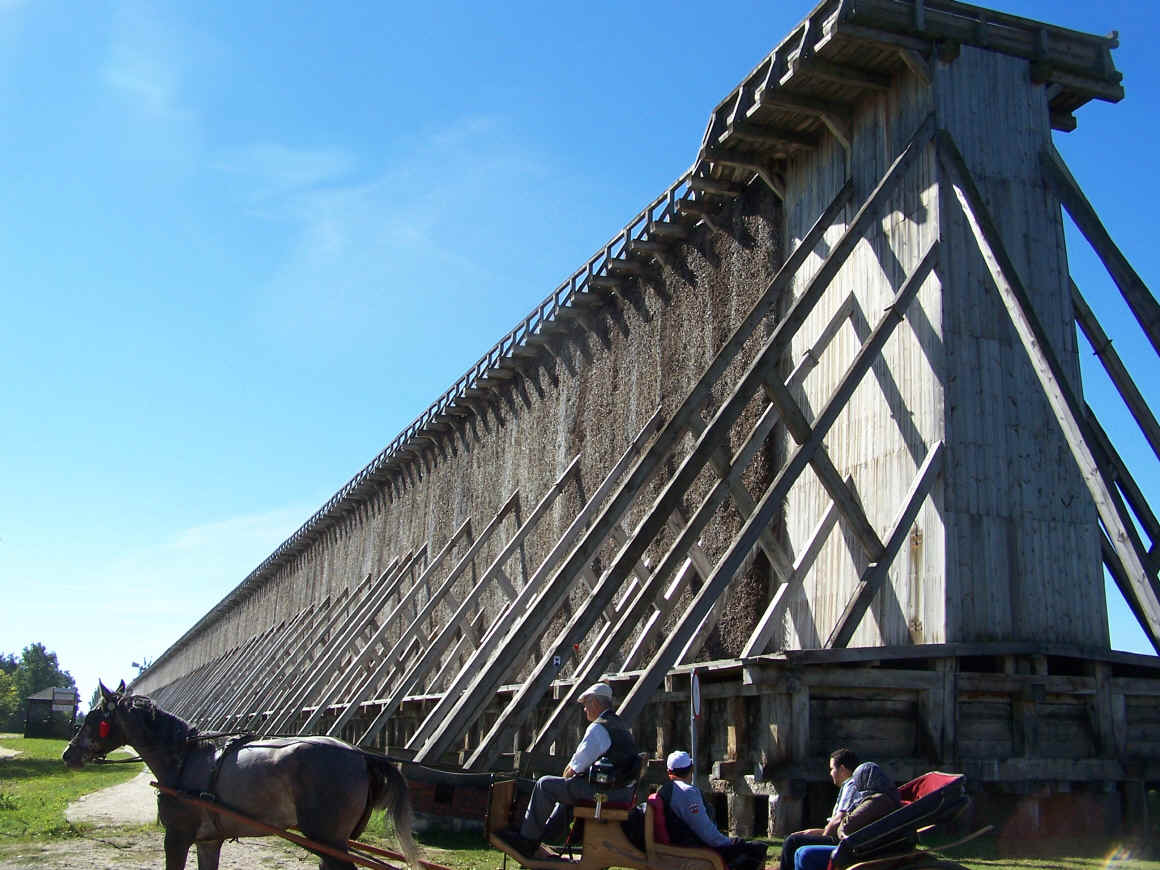
The great northern port city
of Gdańsk,
Poland, with its magnificently preserved old city center:
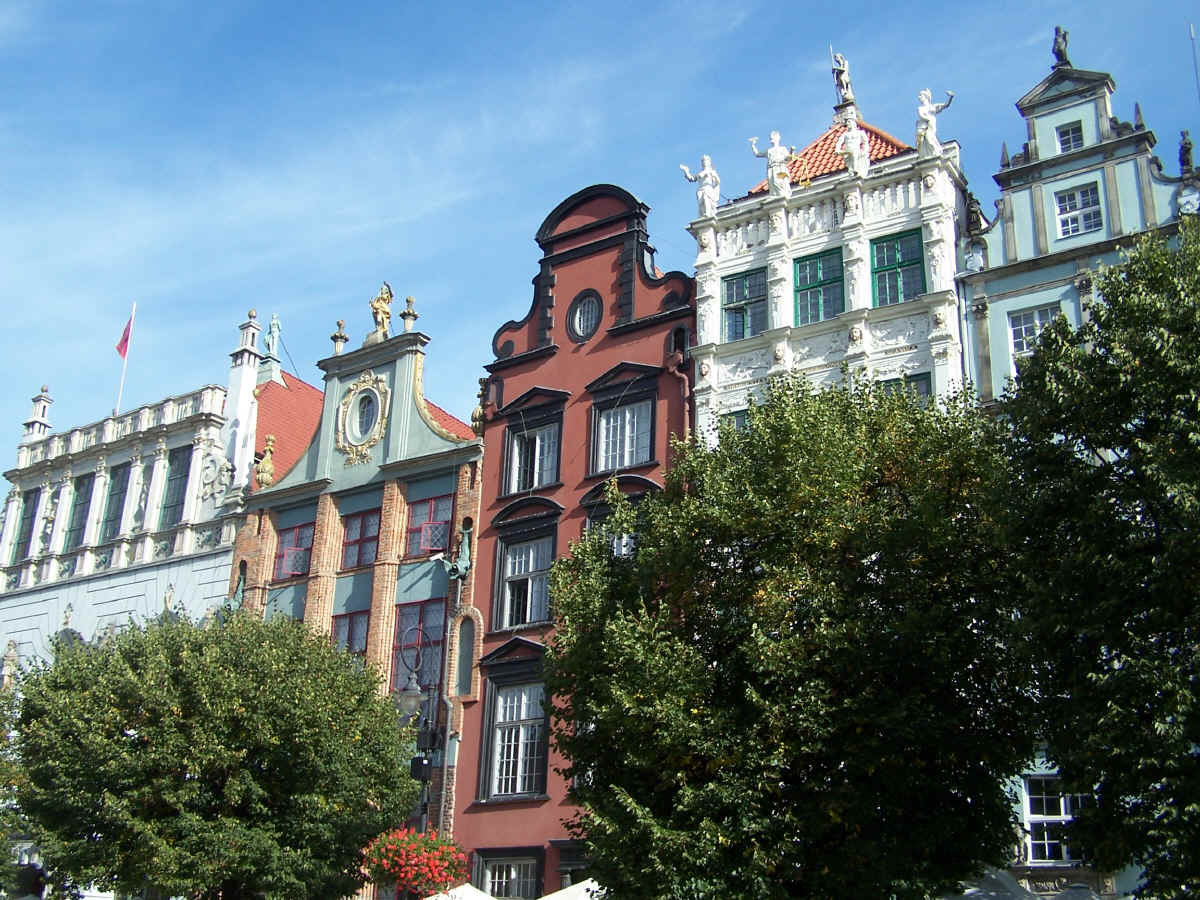
The City Hall of Gdańsk:
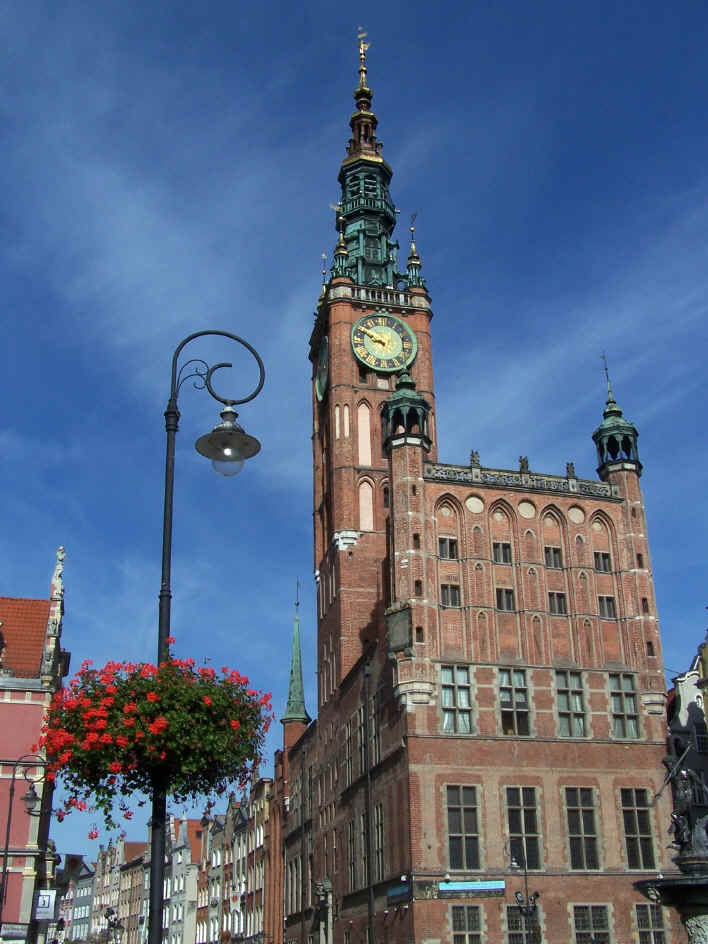
A street view of Gdańsk
with the cathedral in the back:
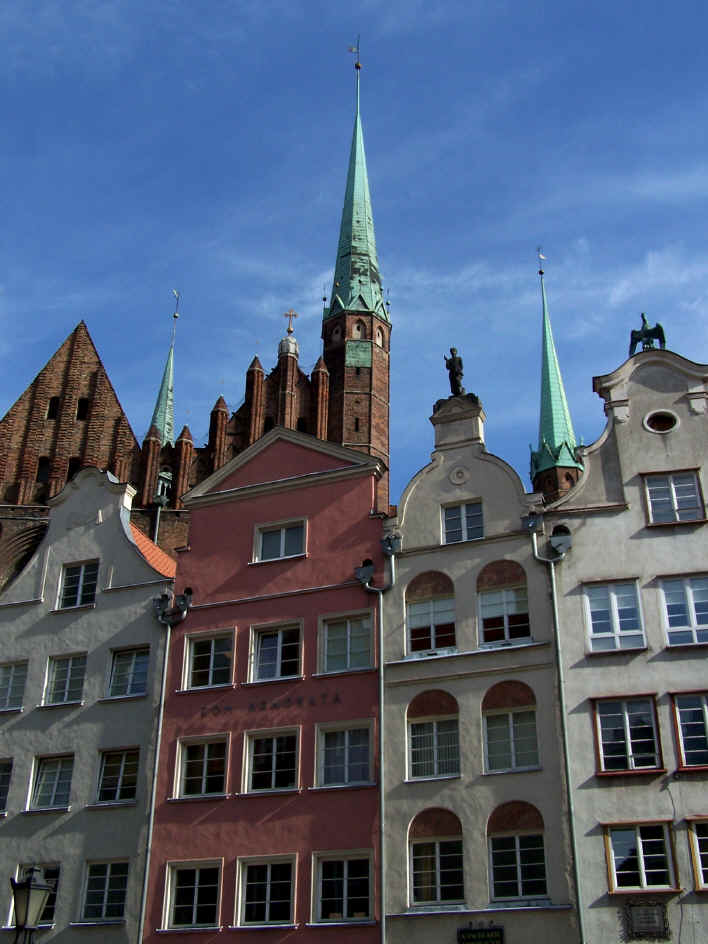
The Old Arsenal building in
Gdańsk.
Built in 1605:
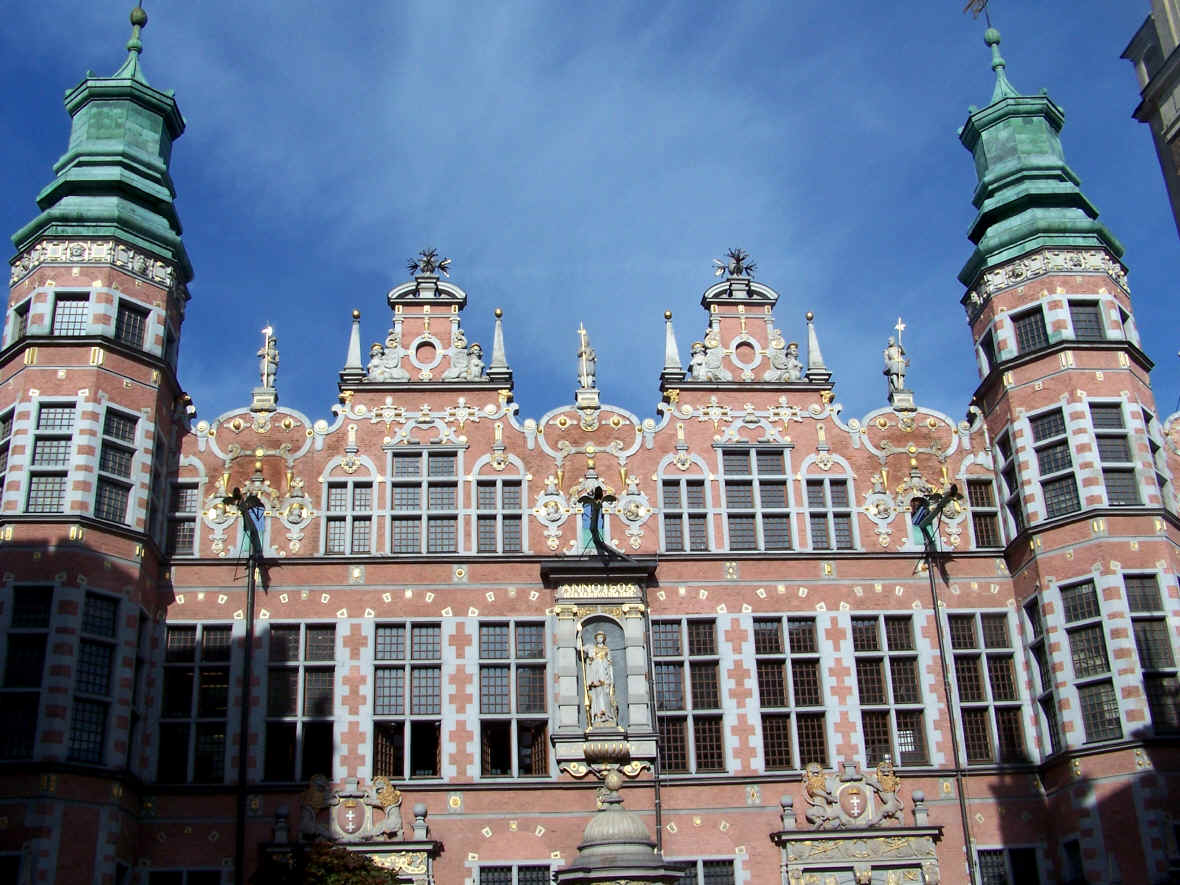
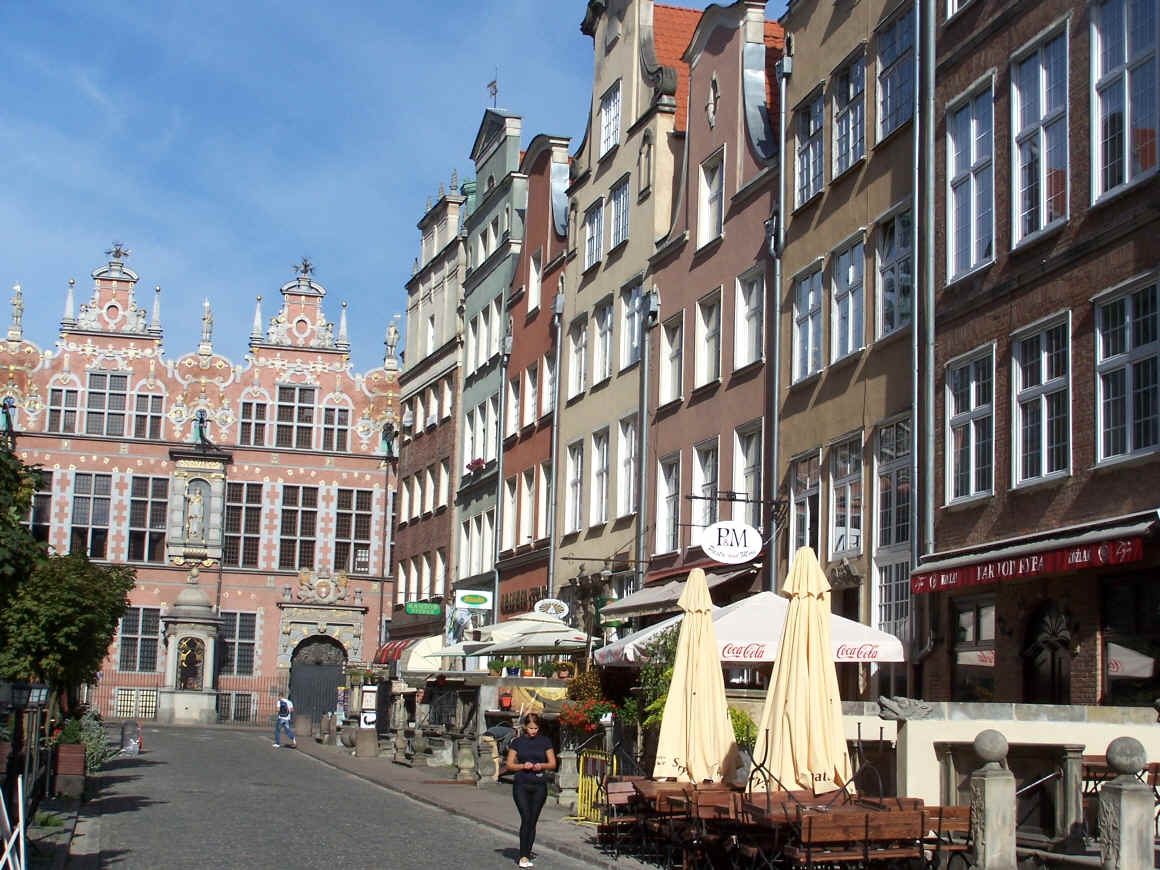
Poland, and all the
ex-communist countries, have a lot of grand old architecture from royal and
imperial eras.
But they also have thousands of decaying concrete apartment blocks left over
from the communist days.
At least they tried to improve this one by painting it, but most are still just
ugly grey boxes.
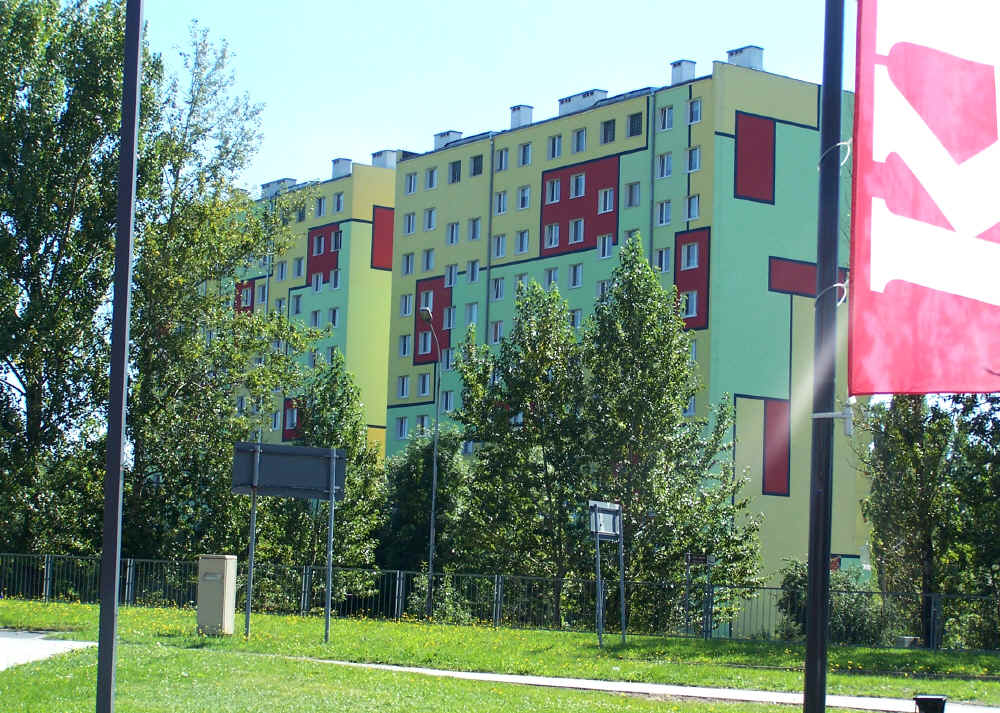
Border sign and border post of Lithuania:
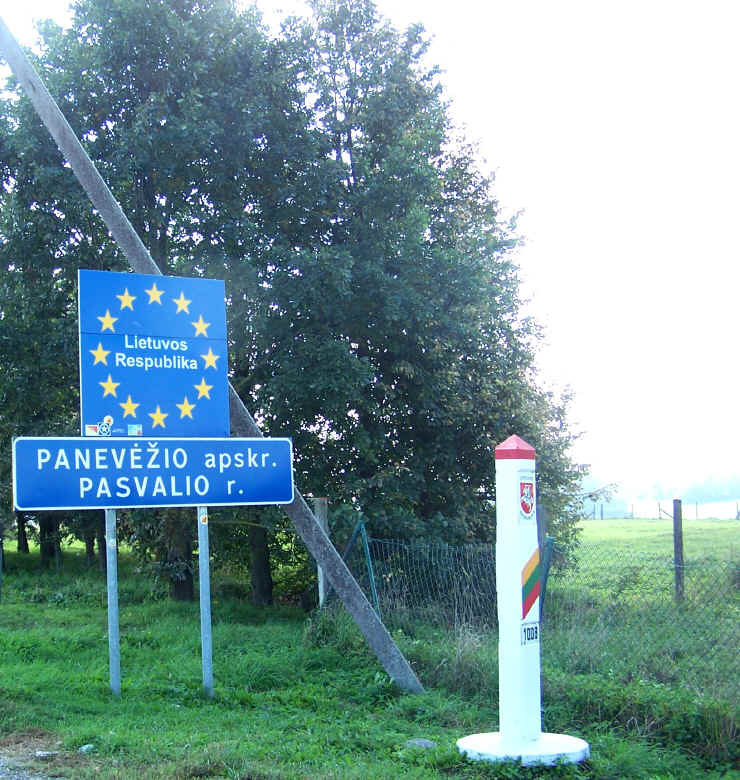
Trakai Castle, on an island
in Lake Skaistis, Lithuania:
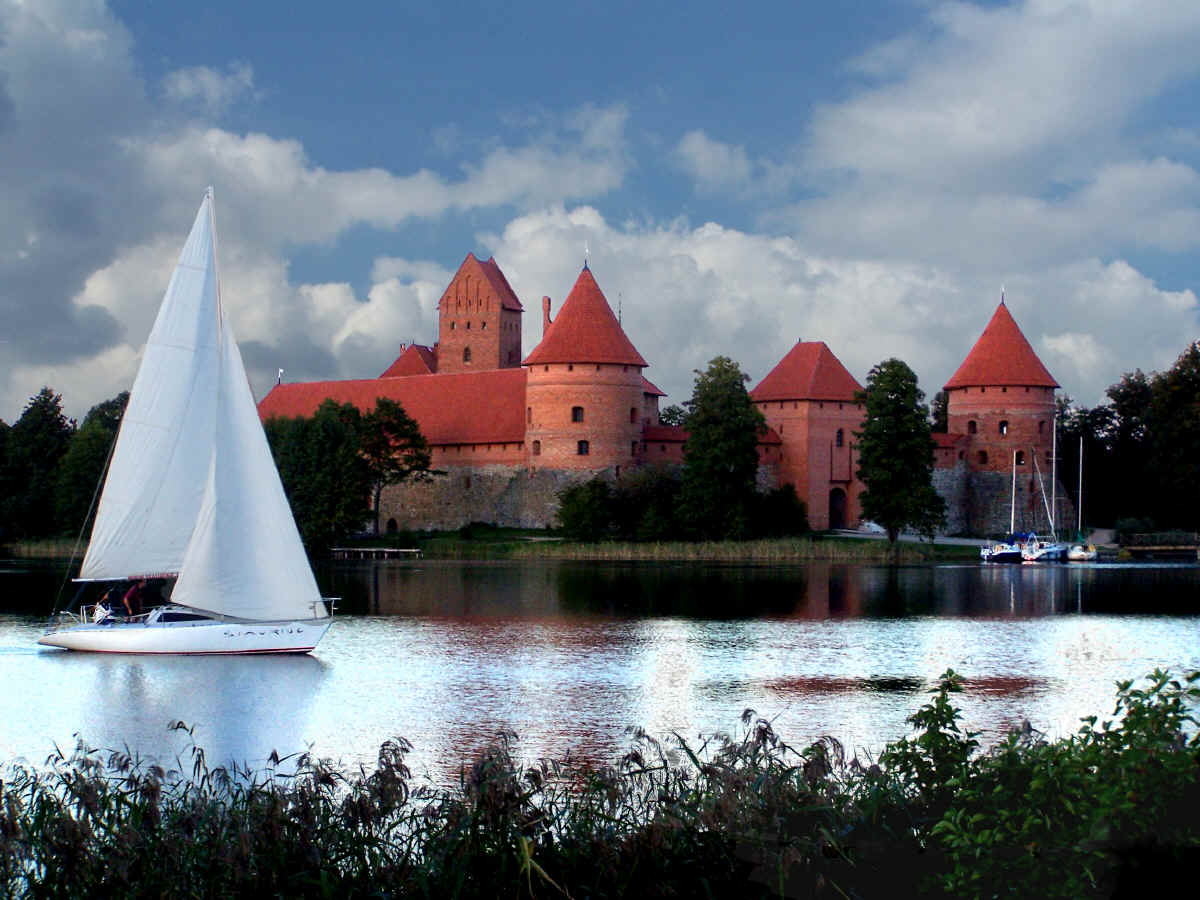
Vilnius, the capital city of
Lithuania, is very impressive; much more so than I ever expected for the size of
the country.
But at one time, Lithuania was a huge and important kingdom,
over 10 times larger than it is now.
Vilnius proves its former importance by its grandiose architecture, such as the
cathedral below.
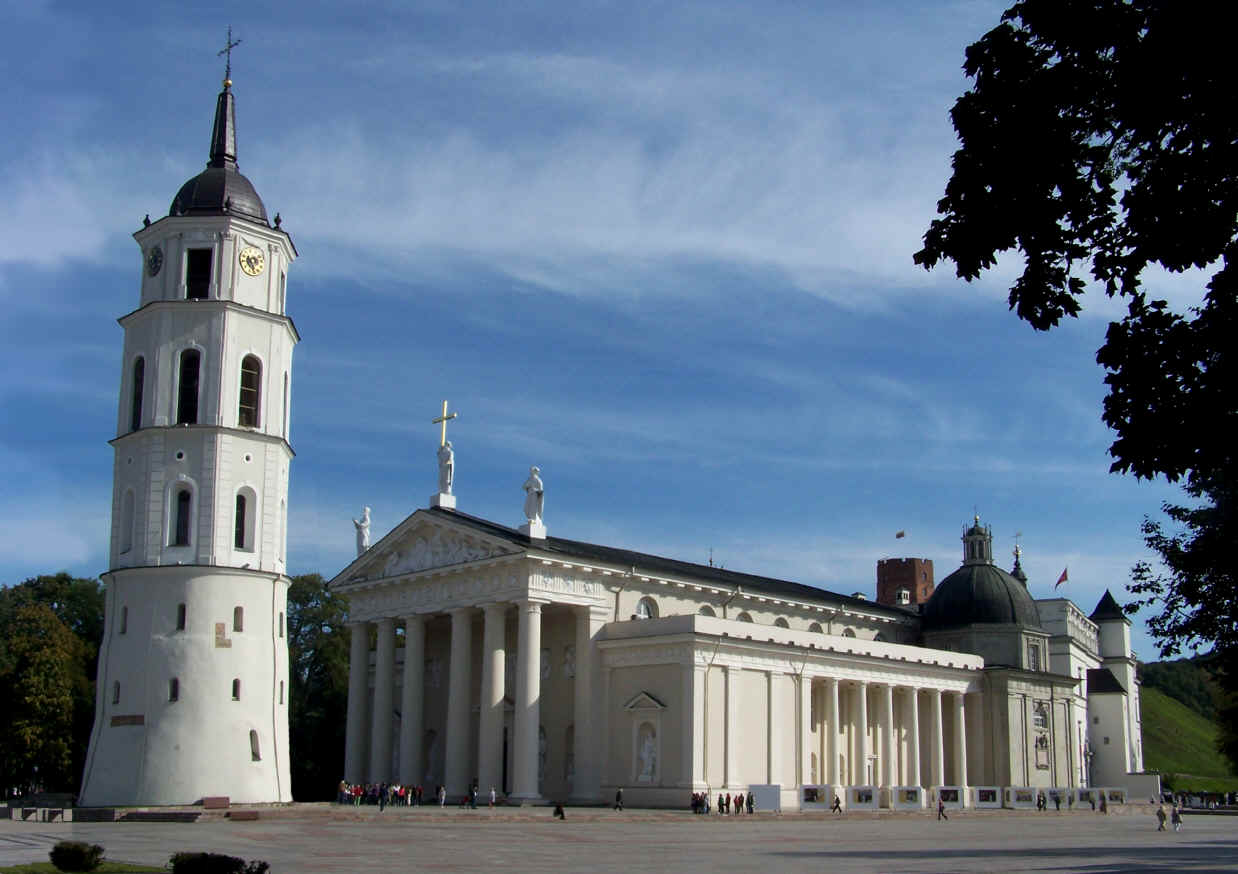
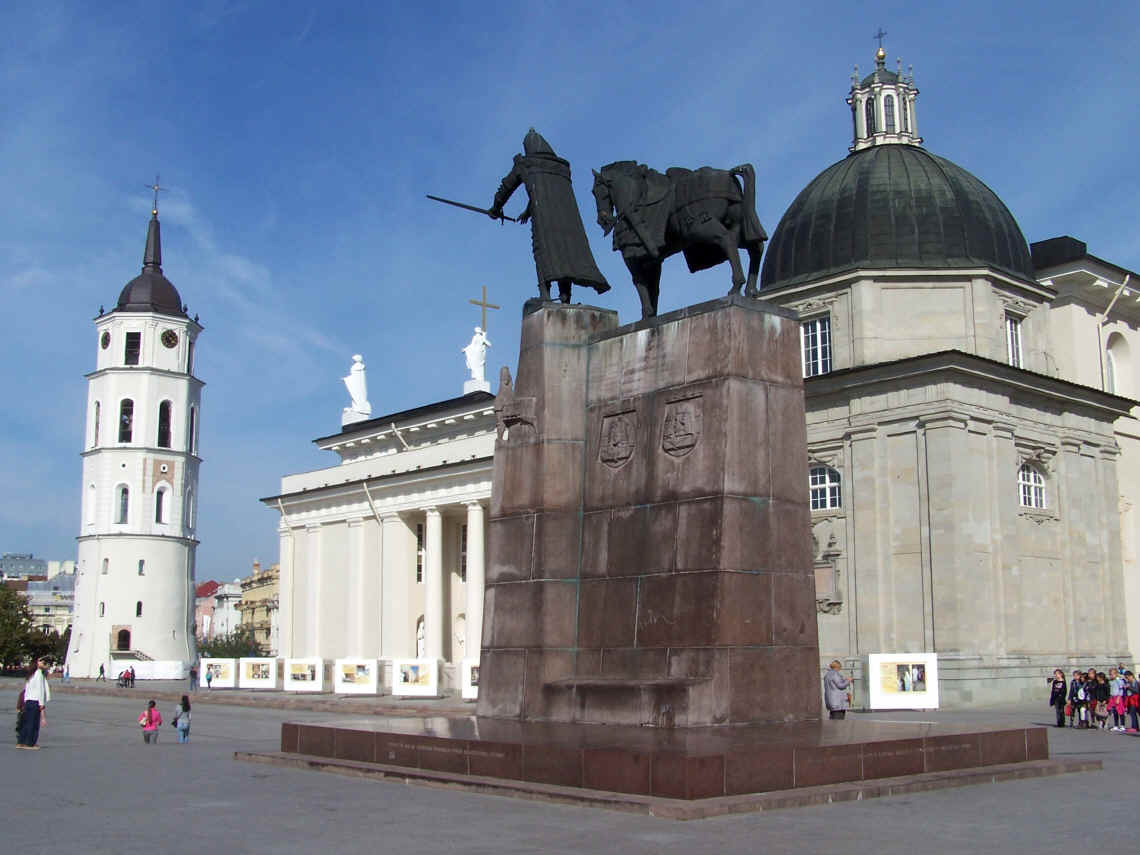
On the hill behind the
cathedral is the Gediminas Tower, from the 1300's:
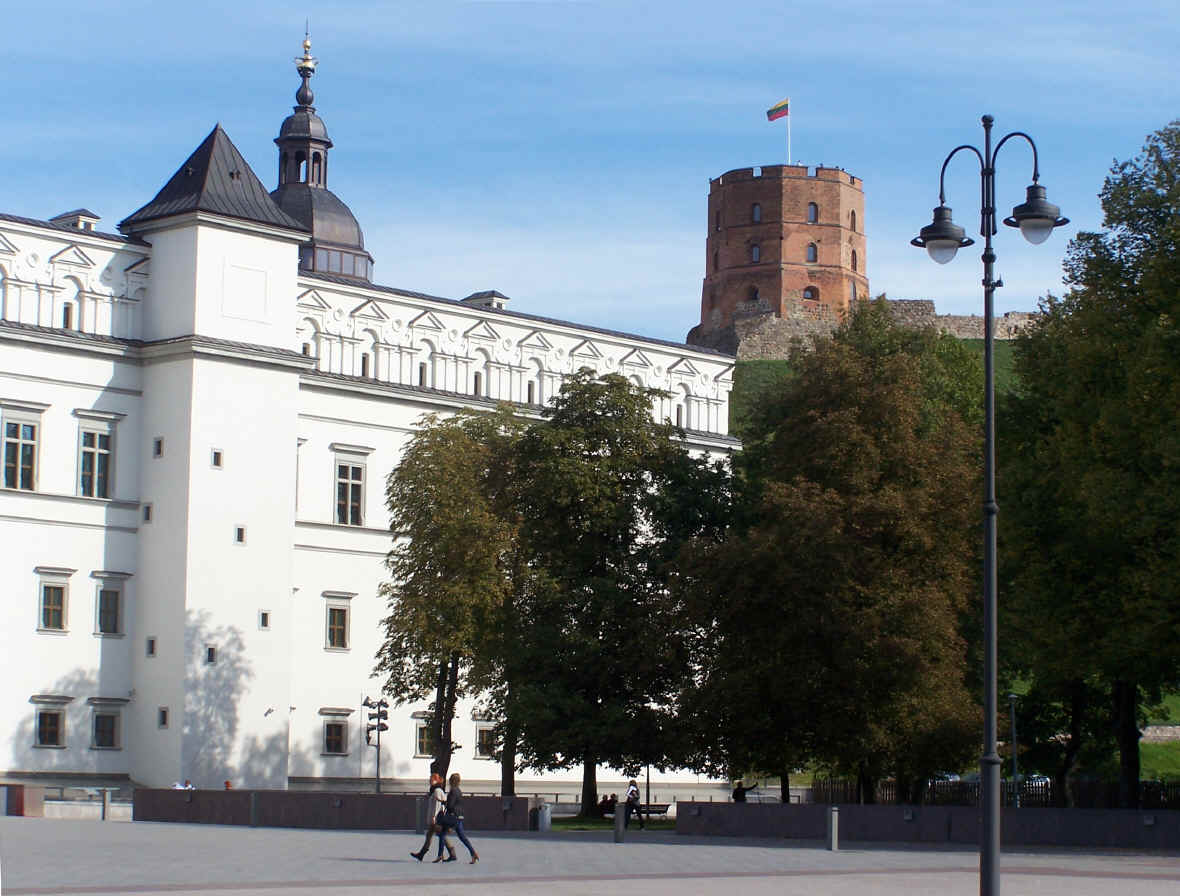
An amazing and rare example
of brick Gothic architecture -- the church of St. Anne in Vilnius:
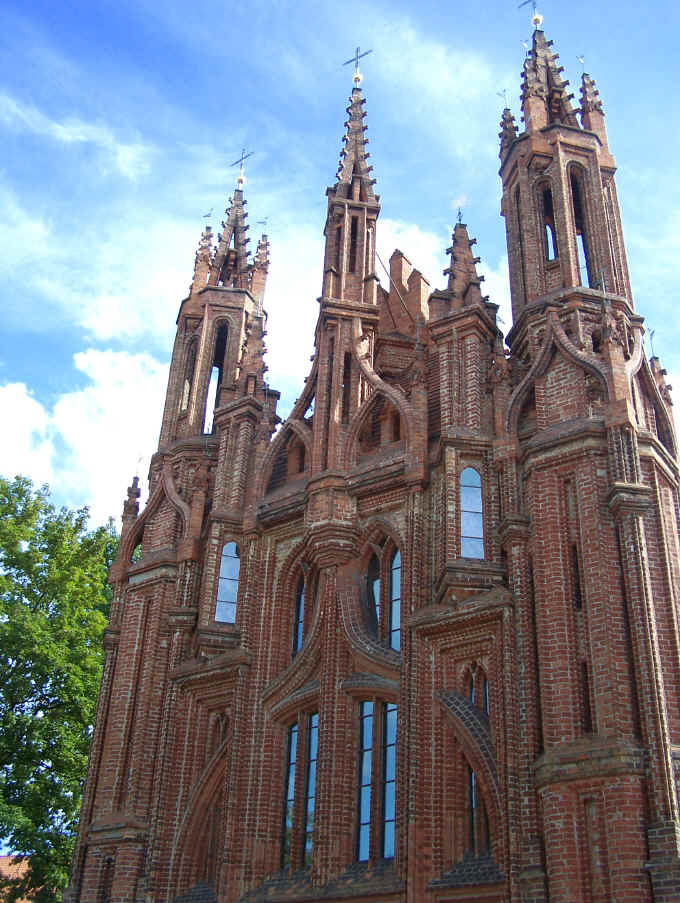
The City Hall of Vilnius,
Lithuania, built 1799. Not sure why it has one gold column:
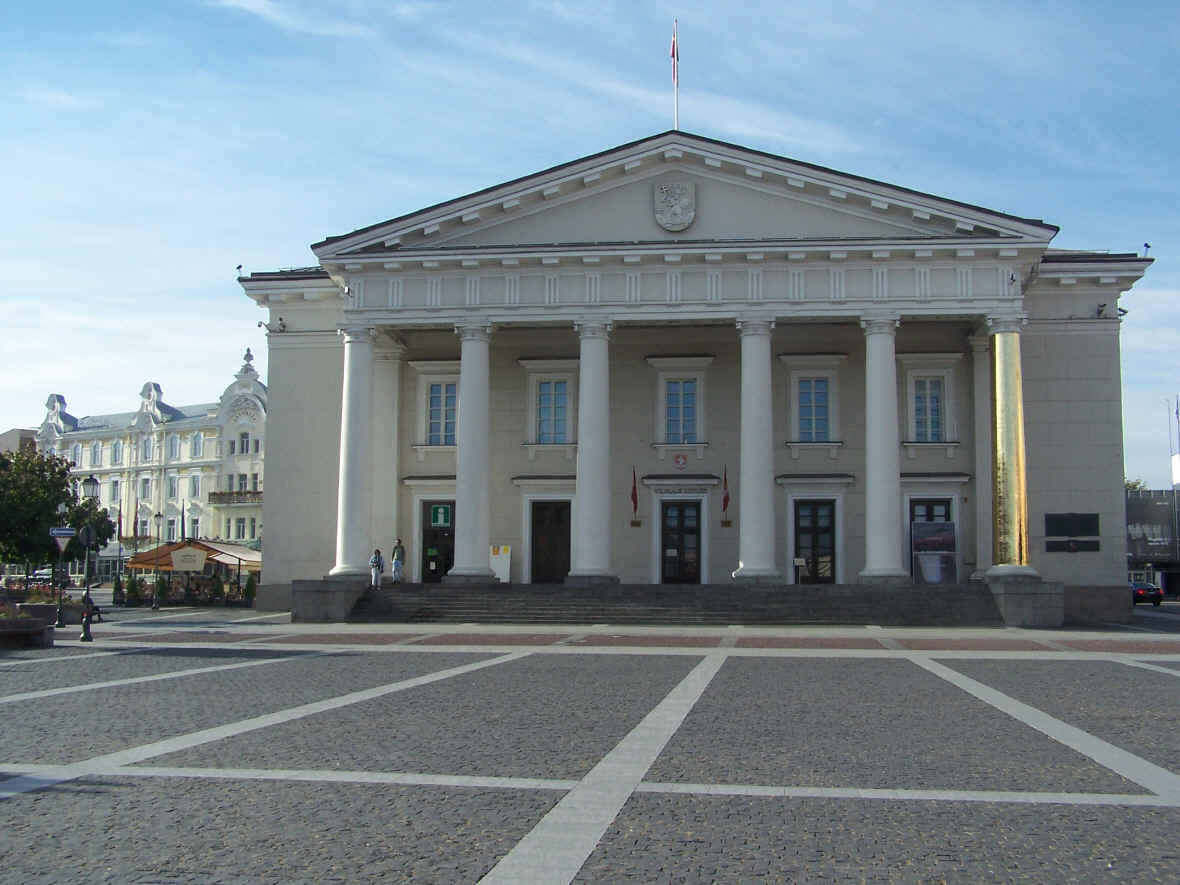
A view of Town Hall Square,
Vilnius:
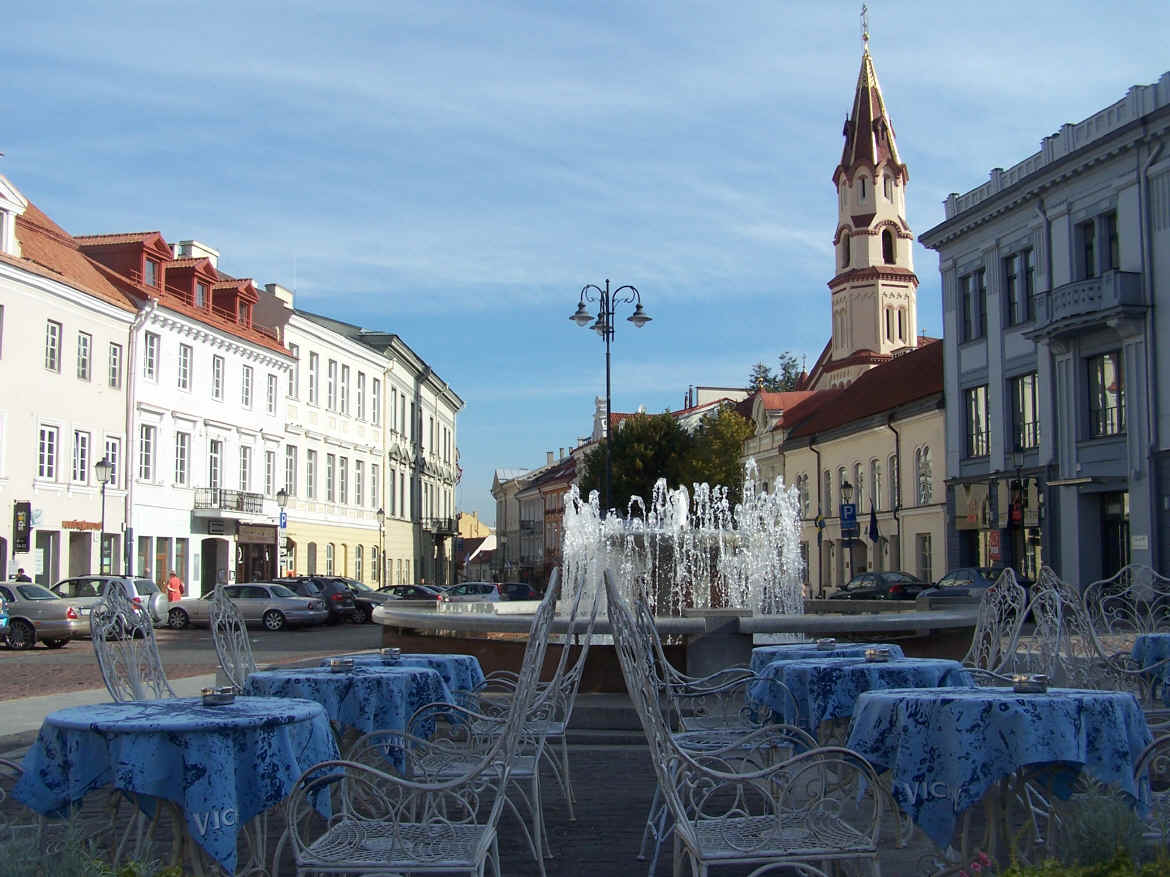
Looking down a cobblestone street toward the Gediminas
Tower:
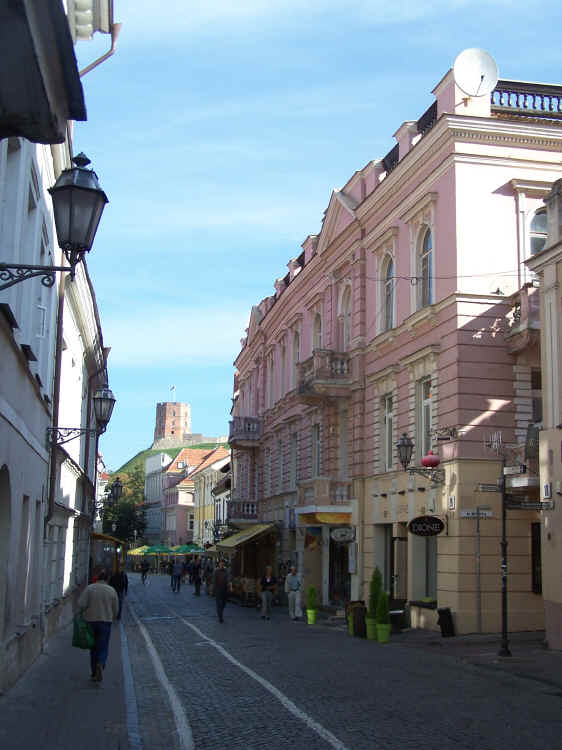
In Latvia now -- Pils Rundāle
Palace:
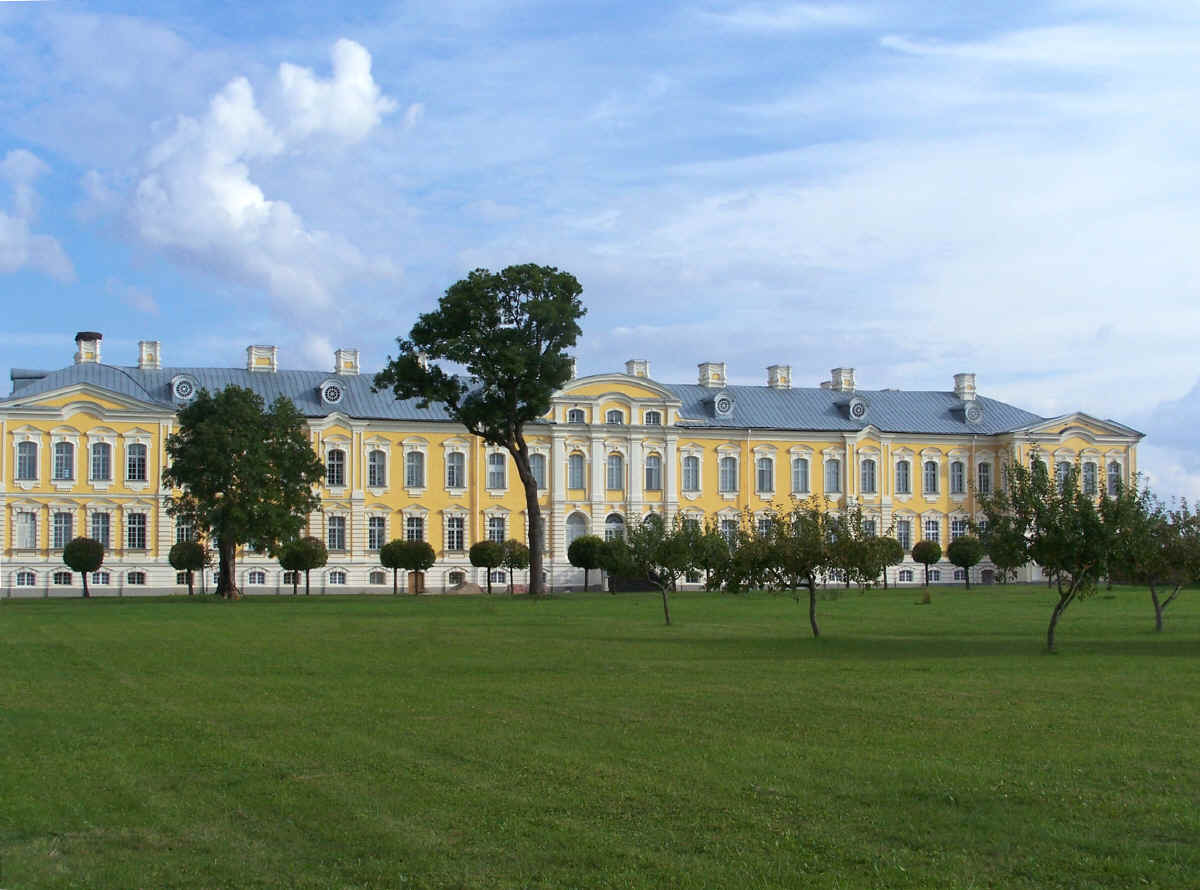
A nice cabin in the Gauja
National Park, Latvia:
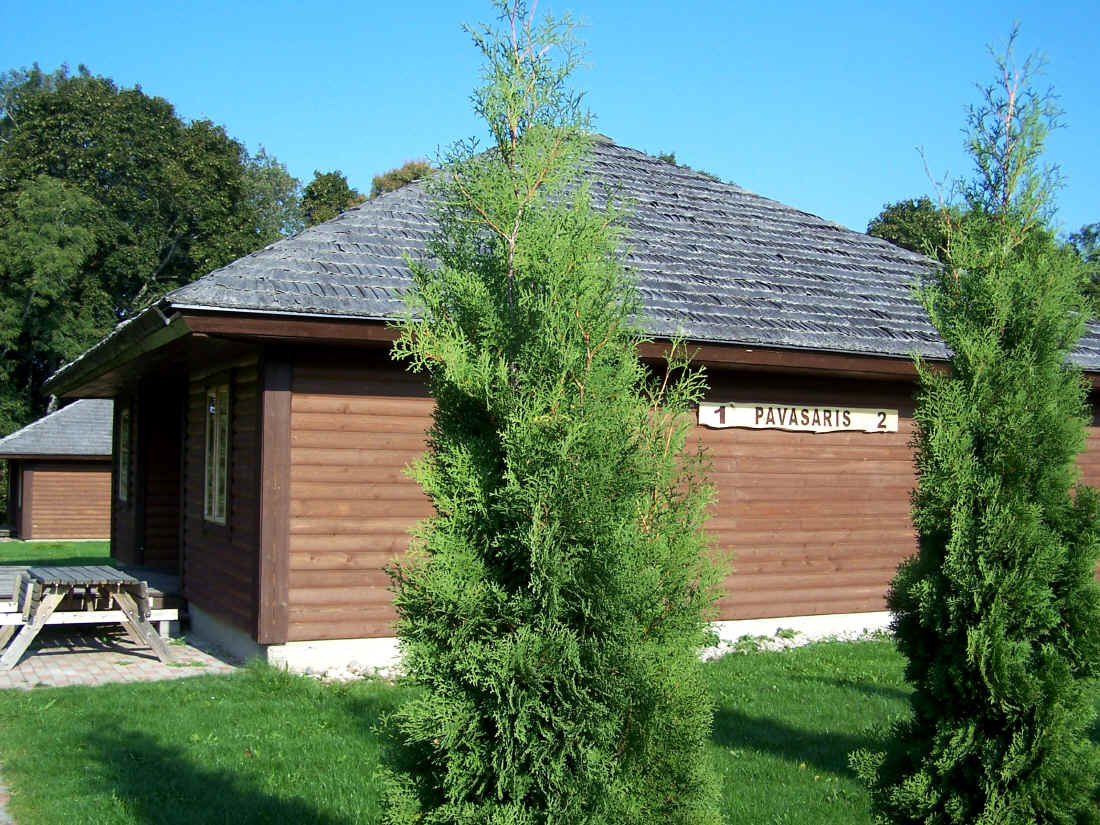
But the cabin came with
about a thousand flies (and no flyswatter).
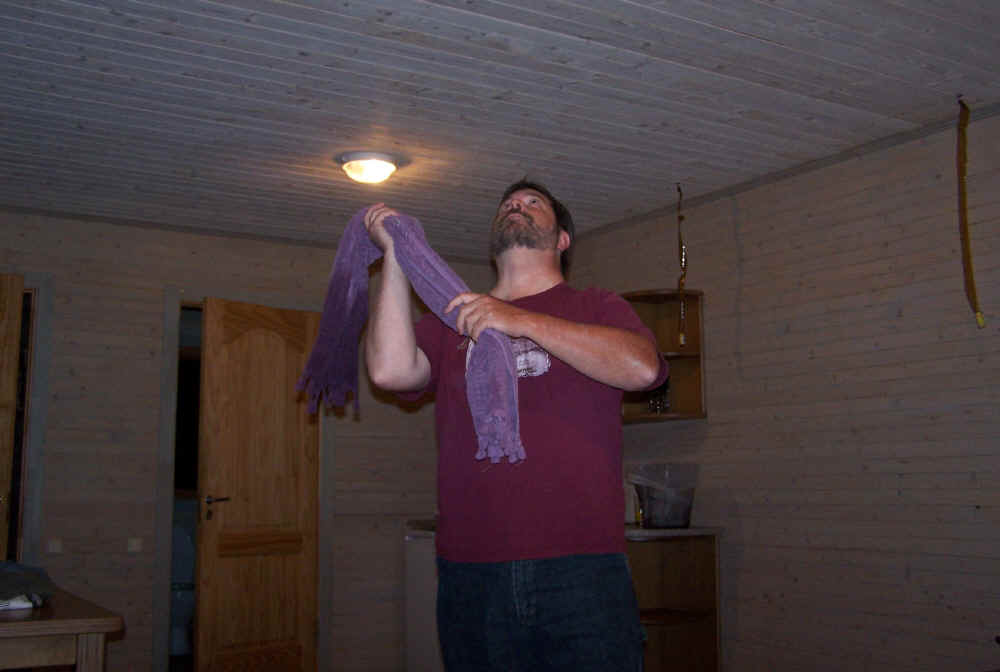
A nice breakfast for a
crabby guy....
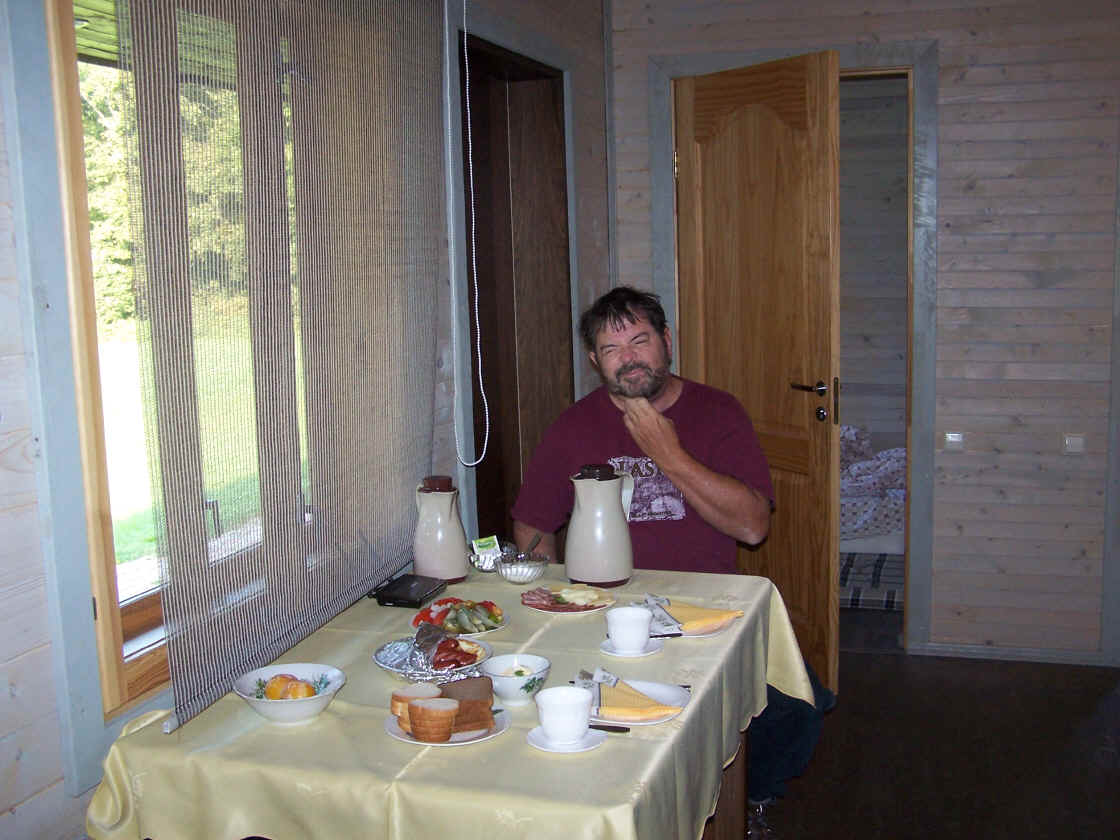
The ruins of the Krimulda
house in the Gauja National Park, Latvia:
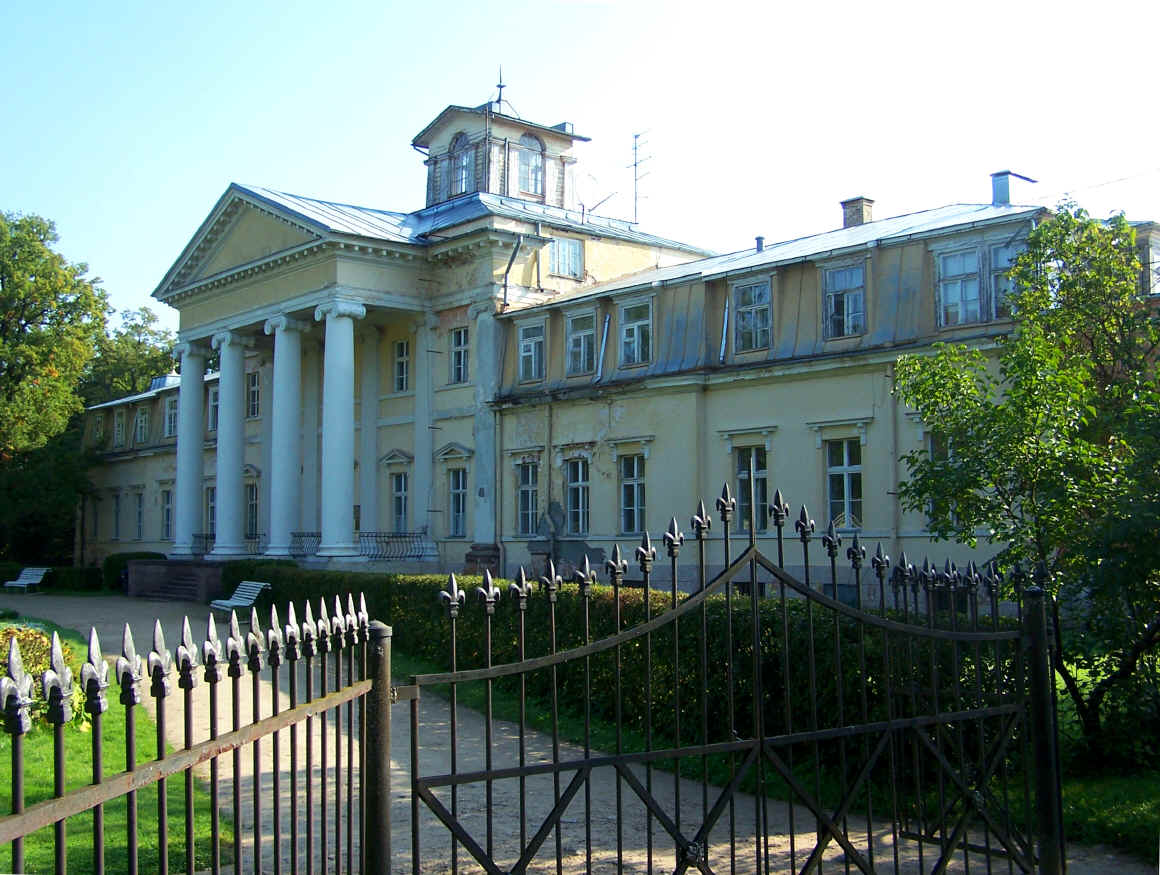
A pretty old house near the
ruins of Krimulda:
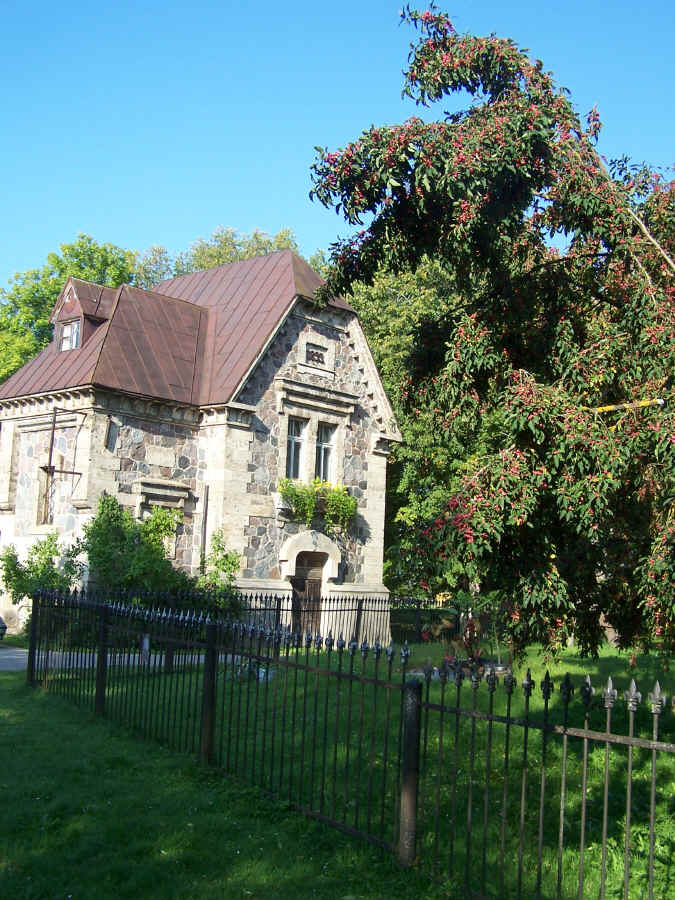
Finally, Estonia -- the northermost country on the trip!
The red roofs of Tallinn,
the capital of Estonia:
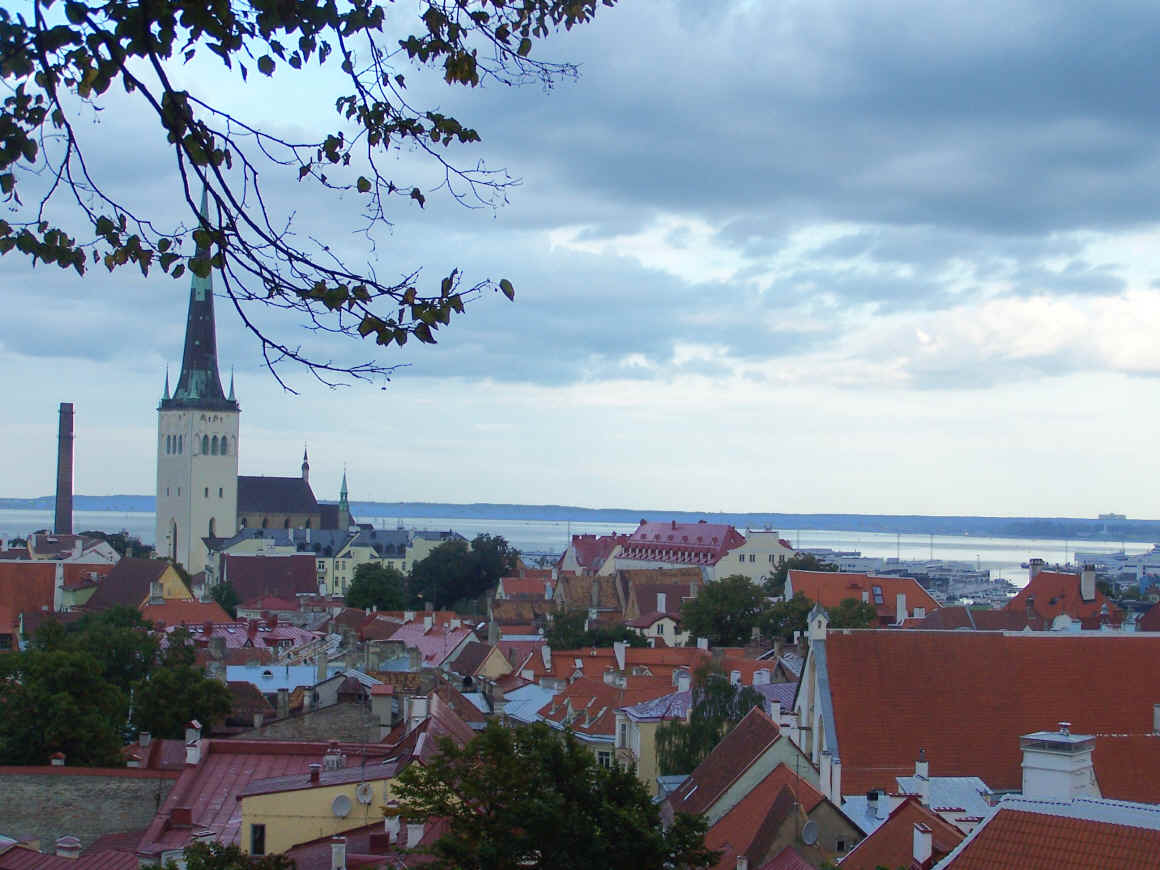
A pretty church in Tallinn:
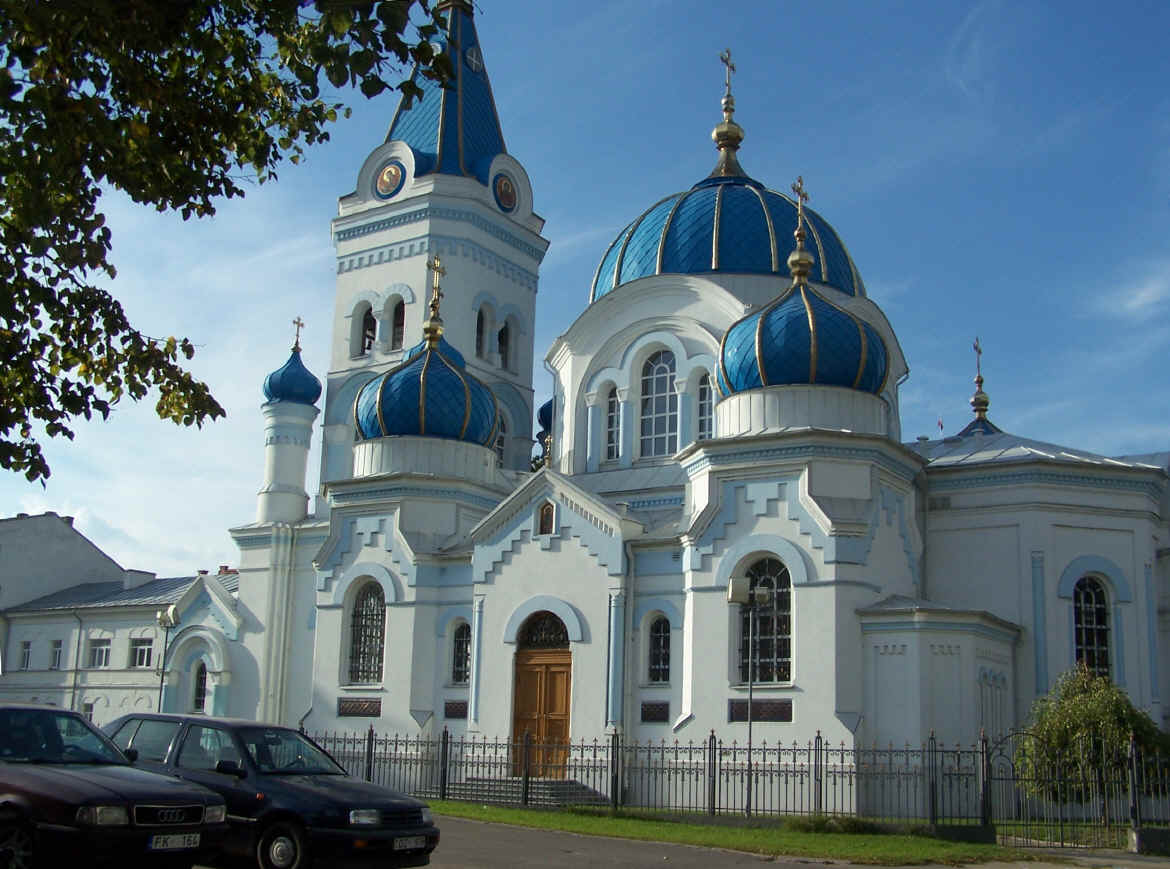
The Kiek in de Kok tower,
Tallinn:
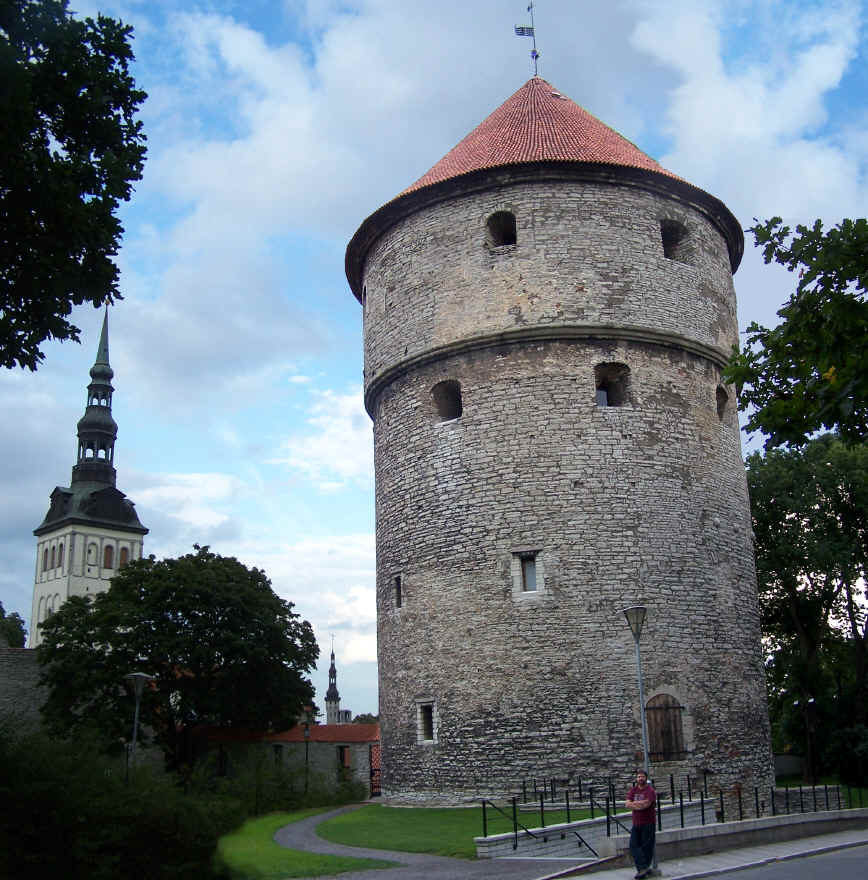
The Toompea Castle:
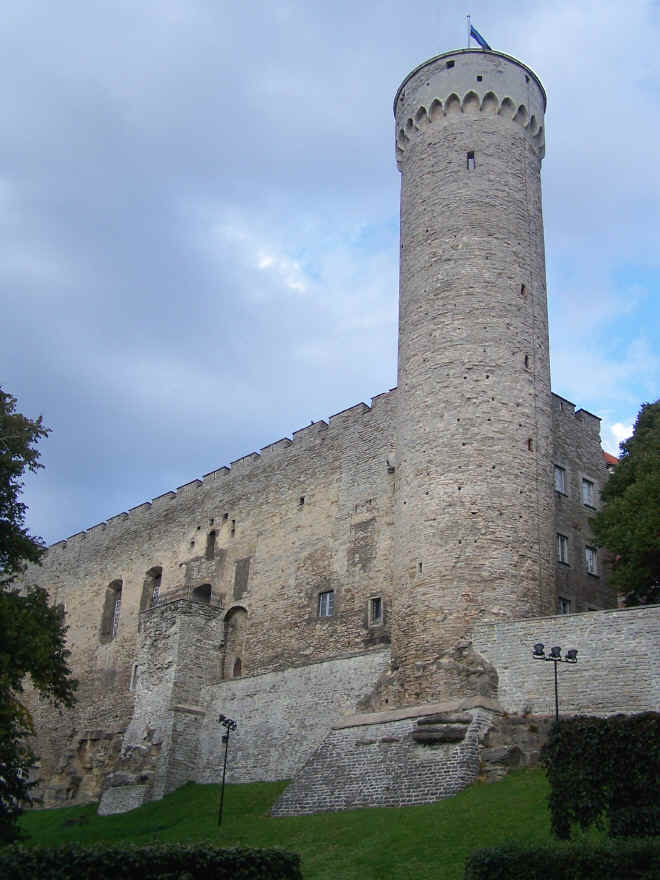
Part of Tallinn's ancient city
walls:
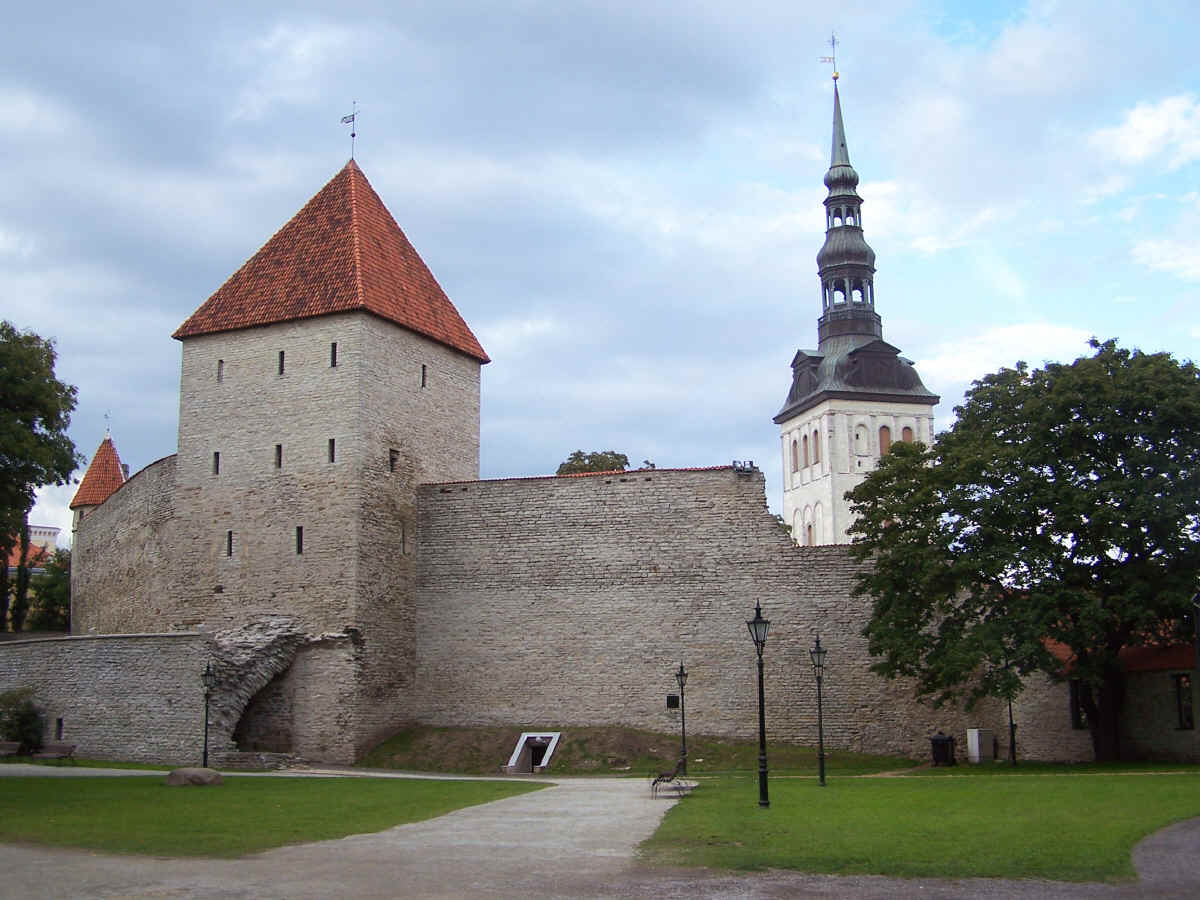
The gates to the Old City:
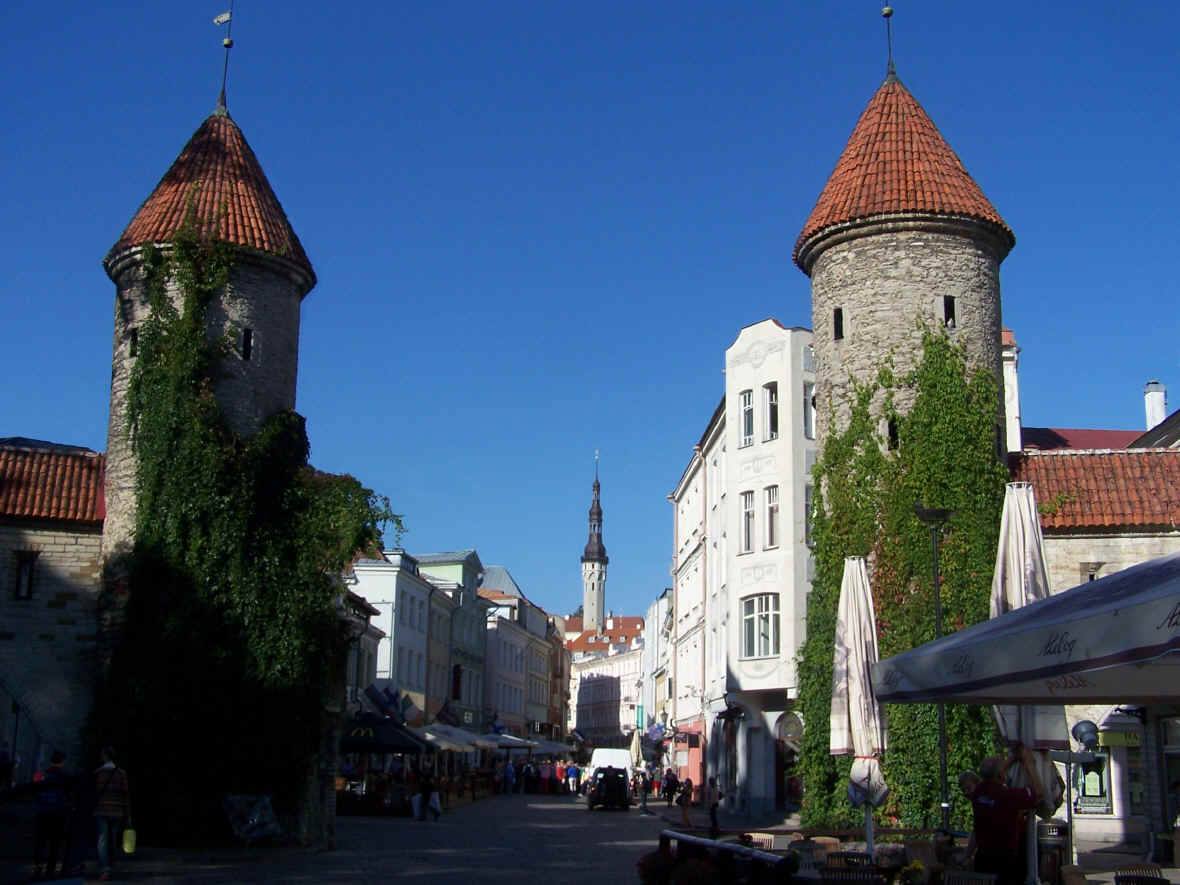
Medieval buildings in
Tallinn:
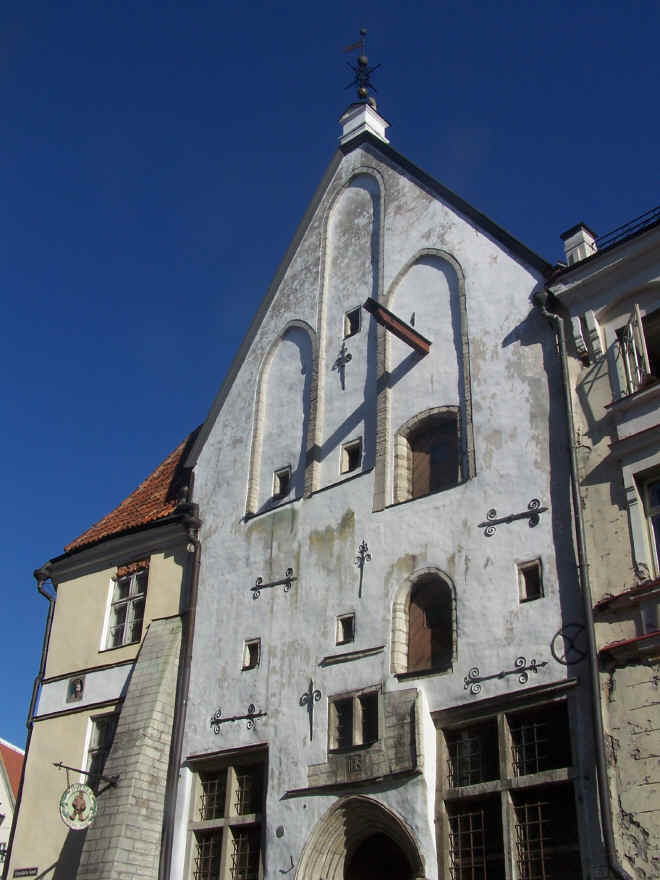
The old City Hall of
Tallinn:
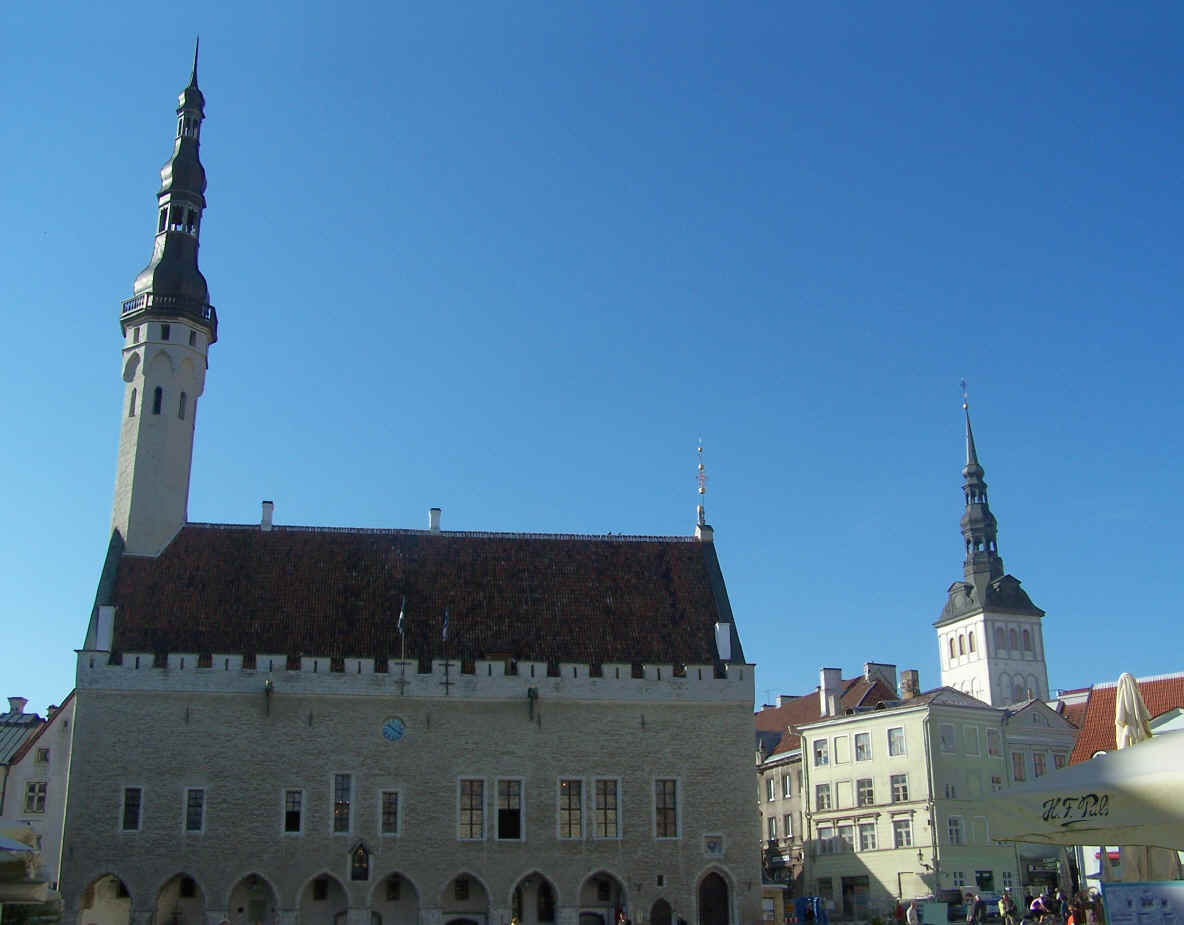
The City Hall from the side:
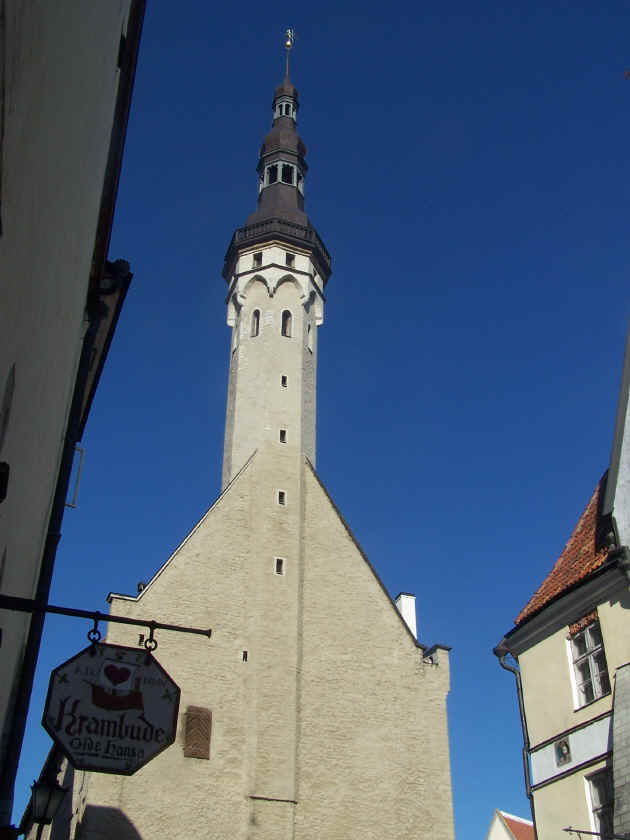
I have never known a city to
have a more genuine medieval feel to it than Tallinn.
It seldom tried to be majestic or grandiose in its architecture -- quaint and
cute describes it best.
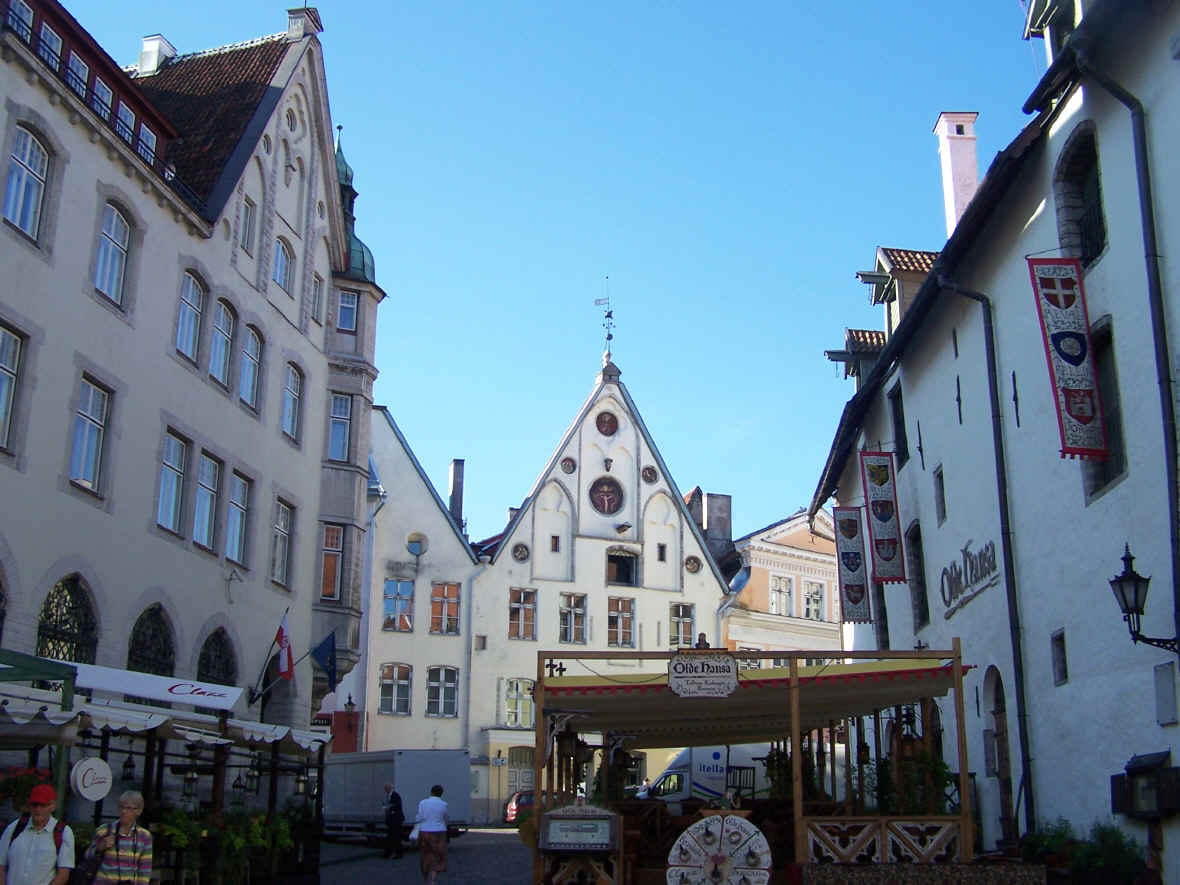
Even the food at the Olde
Hansa was medieval -- wild boar, venison, duck, goose, reindeer, mutton and
rabbit:
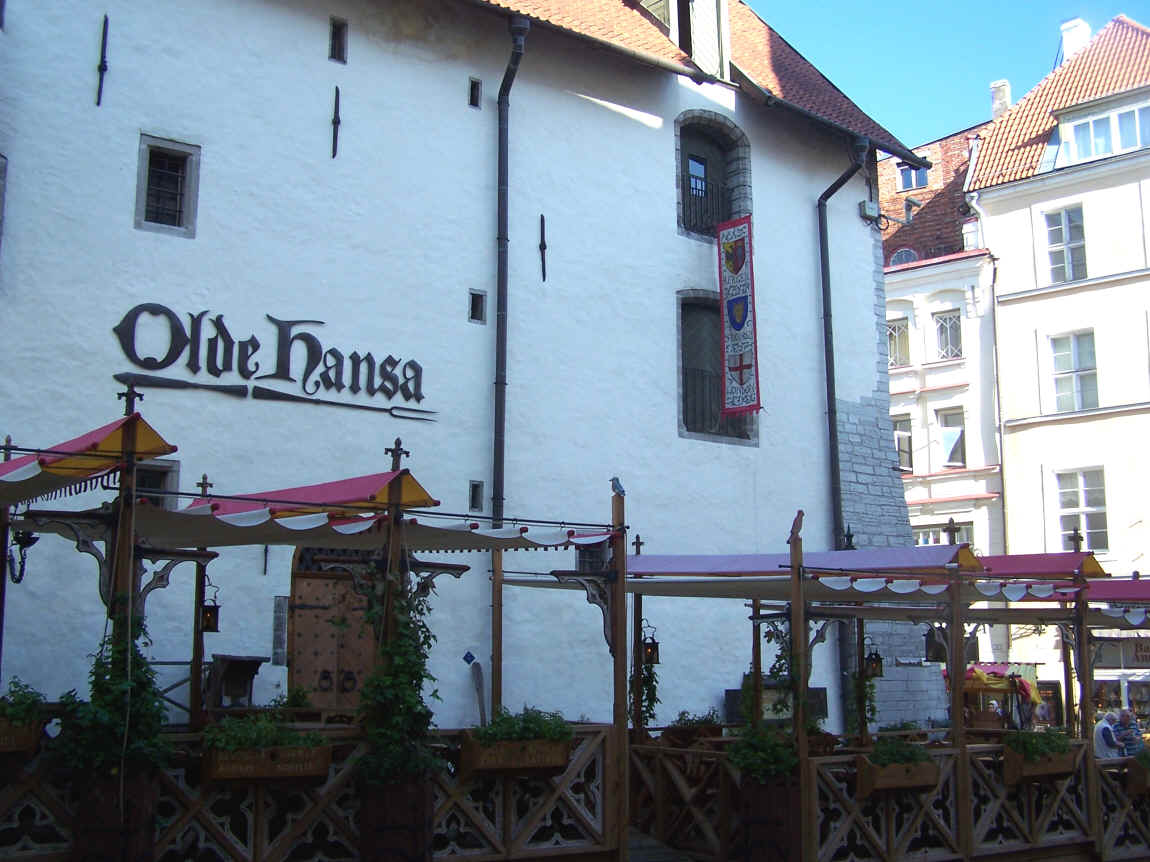
The Parliament of Estonia
(the capitol building) -- getting some repair work done on it:
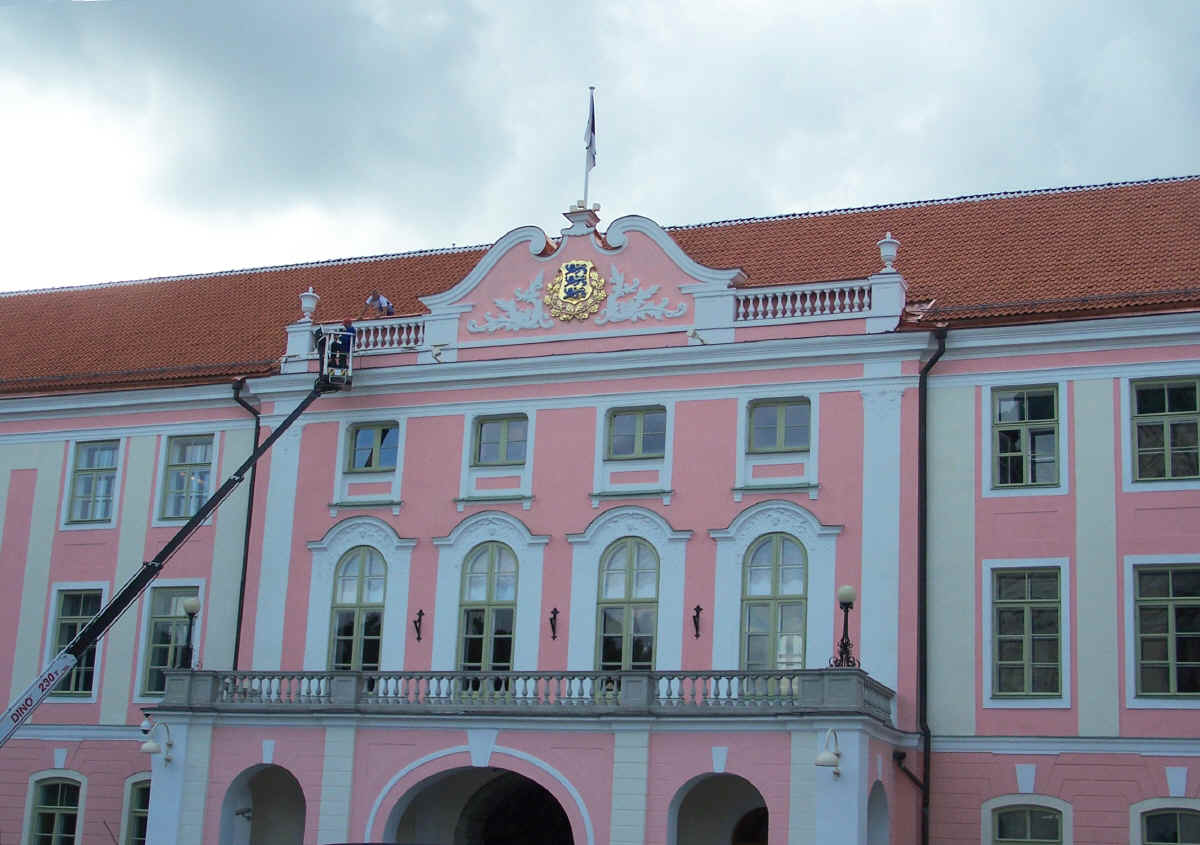
The Alexander Nevsky
Cathedral (Russian Orthodox) on Toompea Hill:
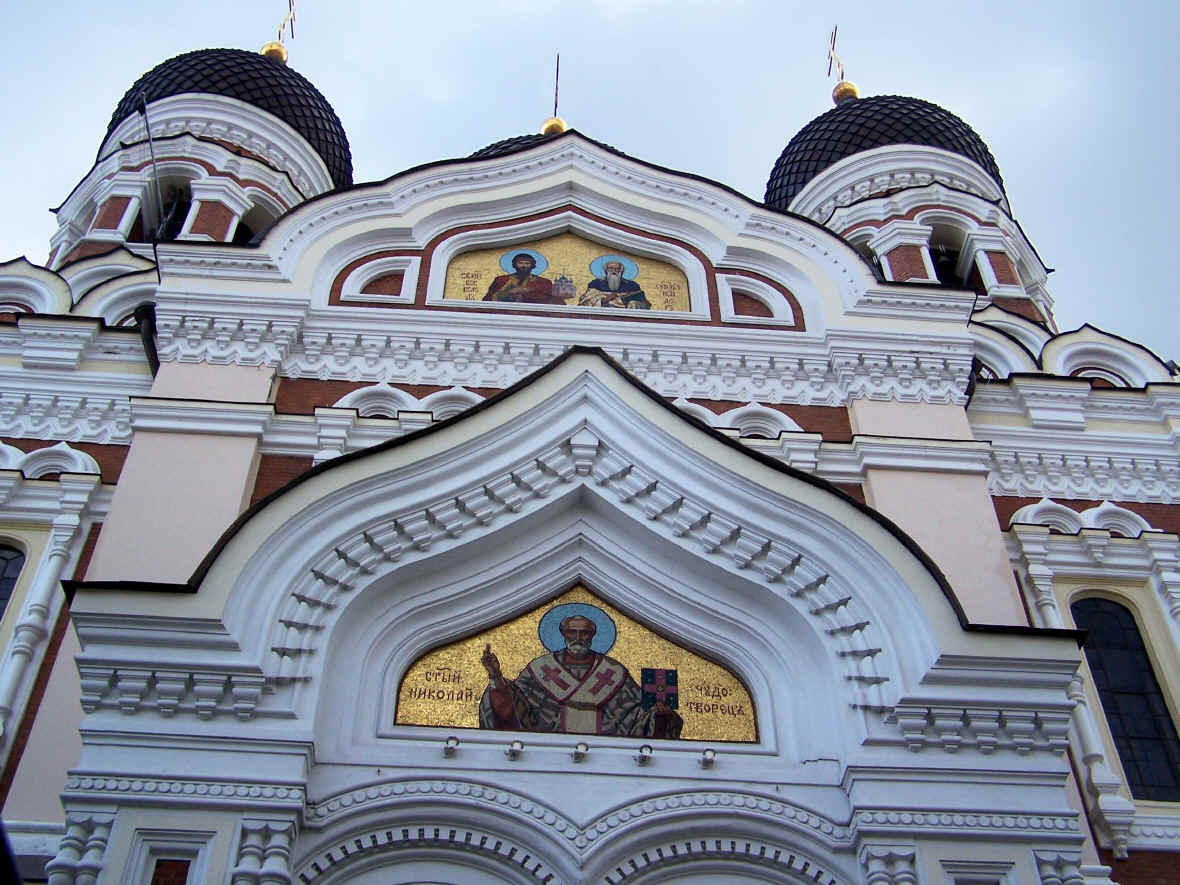
A windmill in Estonia:
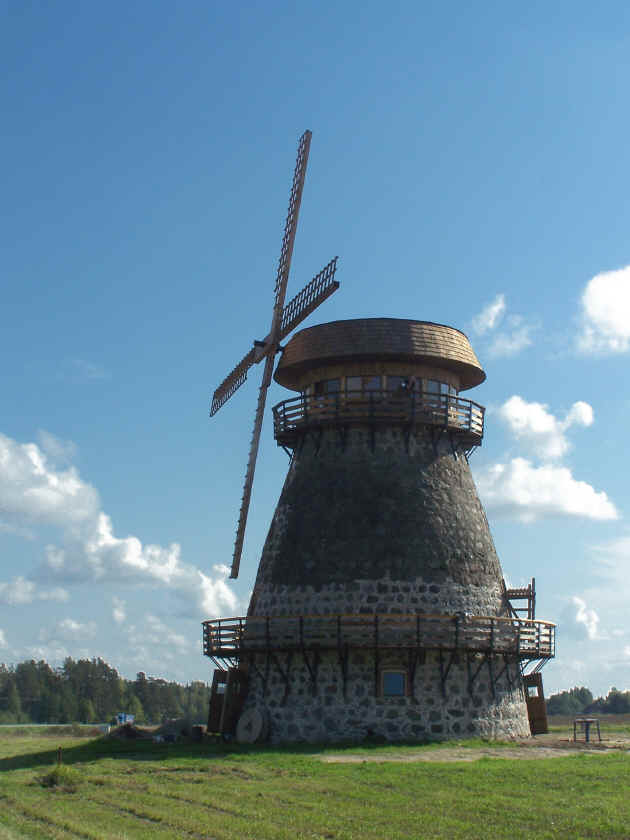
The tiny village of
Lutepää, Estonia -- right on the border with Russia.
I kept watching these swans, but they never moved. Oh... they were
plastic.
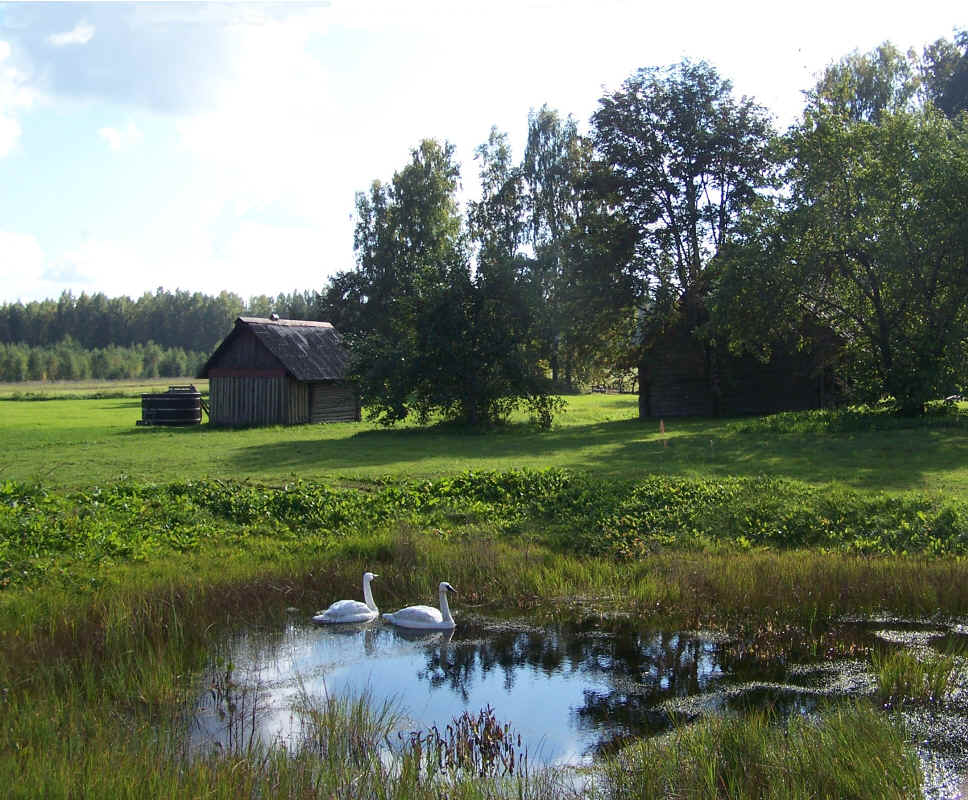
Lutepää, Estonia, is about
as remote a place as anywhere in the whole European Union, with only dirt roads
to get there.
So why did I go? Because this is the only place in the world where you can
drive over the border into Russia without a visa!
Because of the way the border is drawn, it was easier to route the road to
Lutepää through a small chunk of Russia rather than curve the road way around
it.
So of course I had to go there. The red and green post is the border
marker.
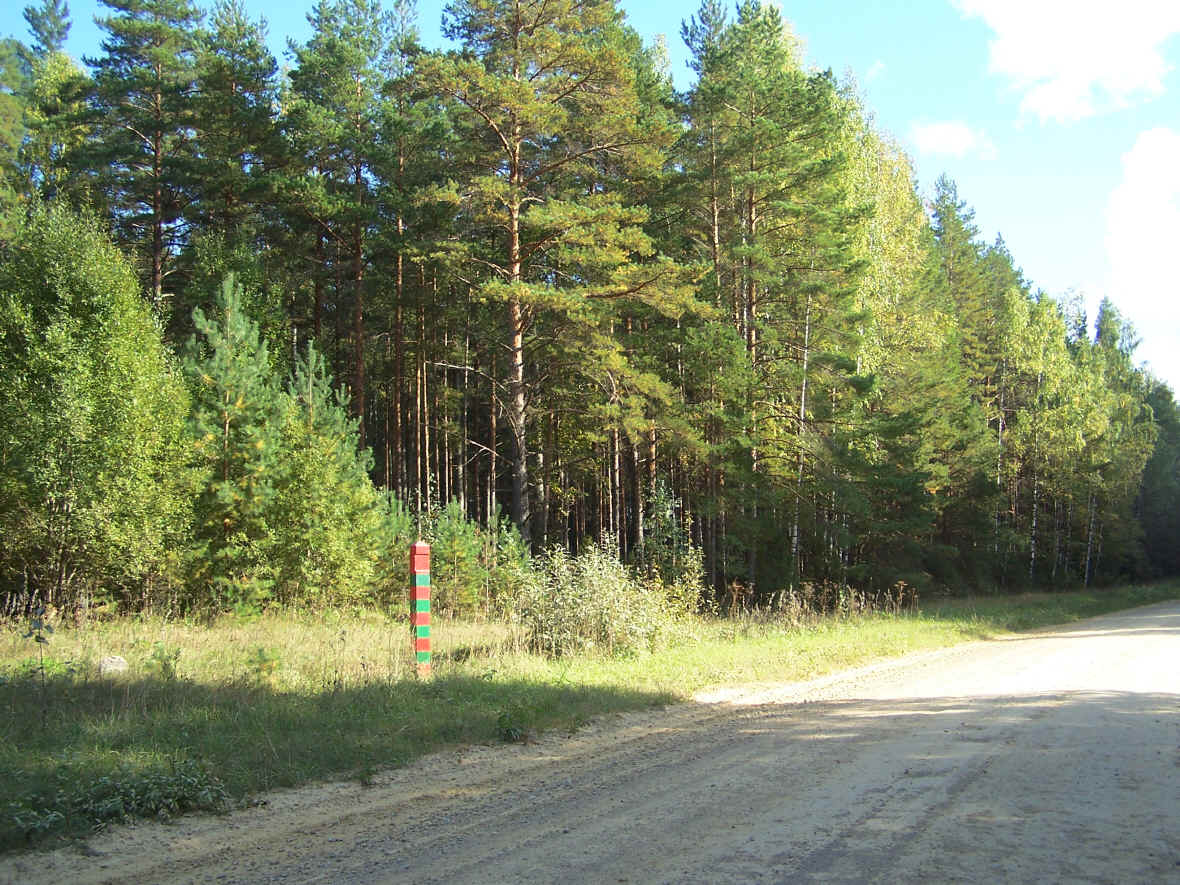
When you drive through the
Russian part of the road, it is illegal to stop, get out, or take
pictures. Of course I did all three.
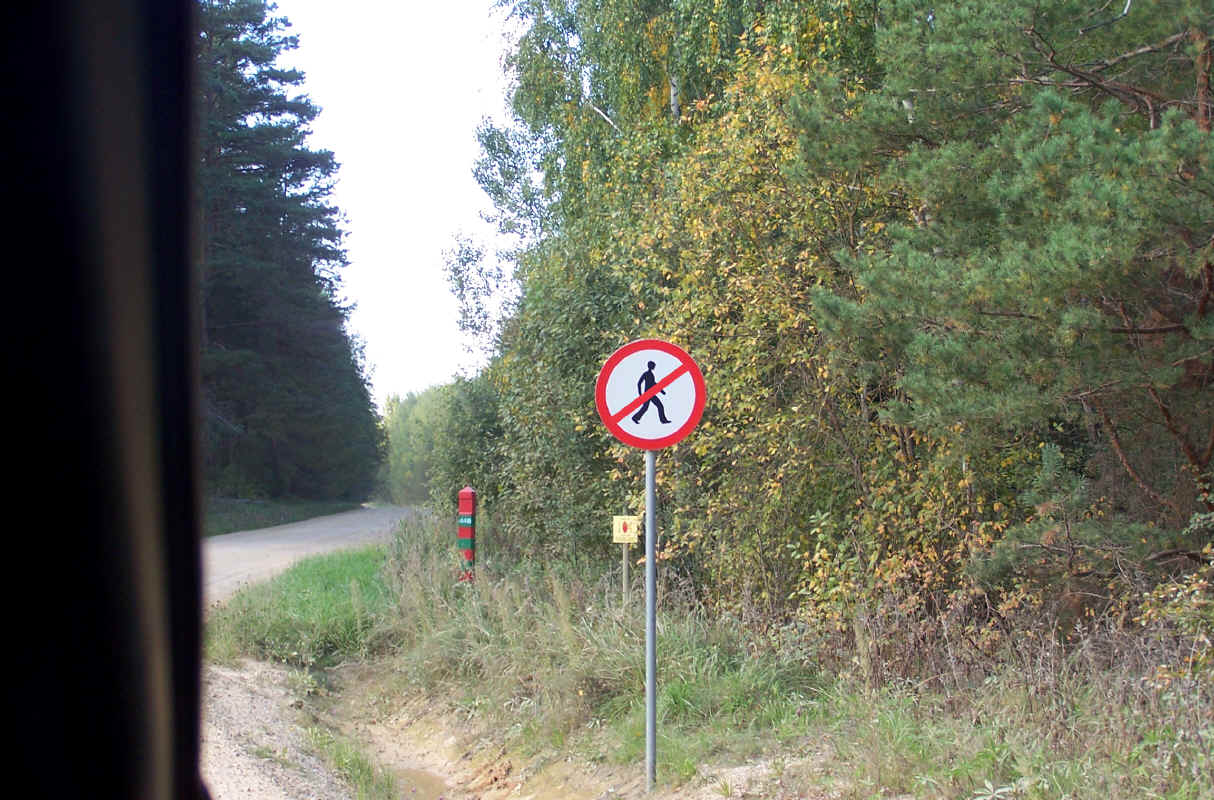
In fact, it was so fun,
after I got back into Estonia, I turned around and drove right back through the
Russian area again!
Then, in order to get back in the direction I was first going, I had to drive
through it a third time.
Several miles later, I saw a more typical Russian border:
